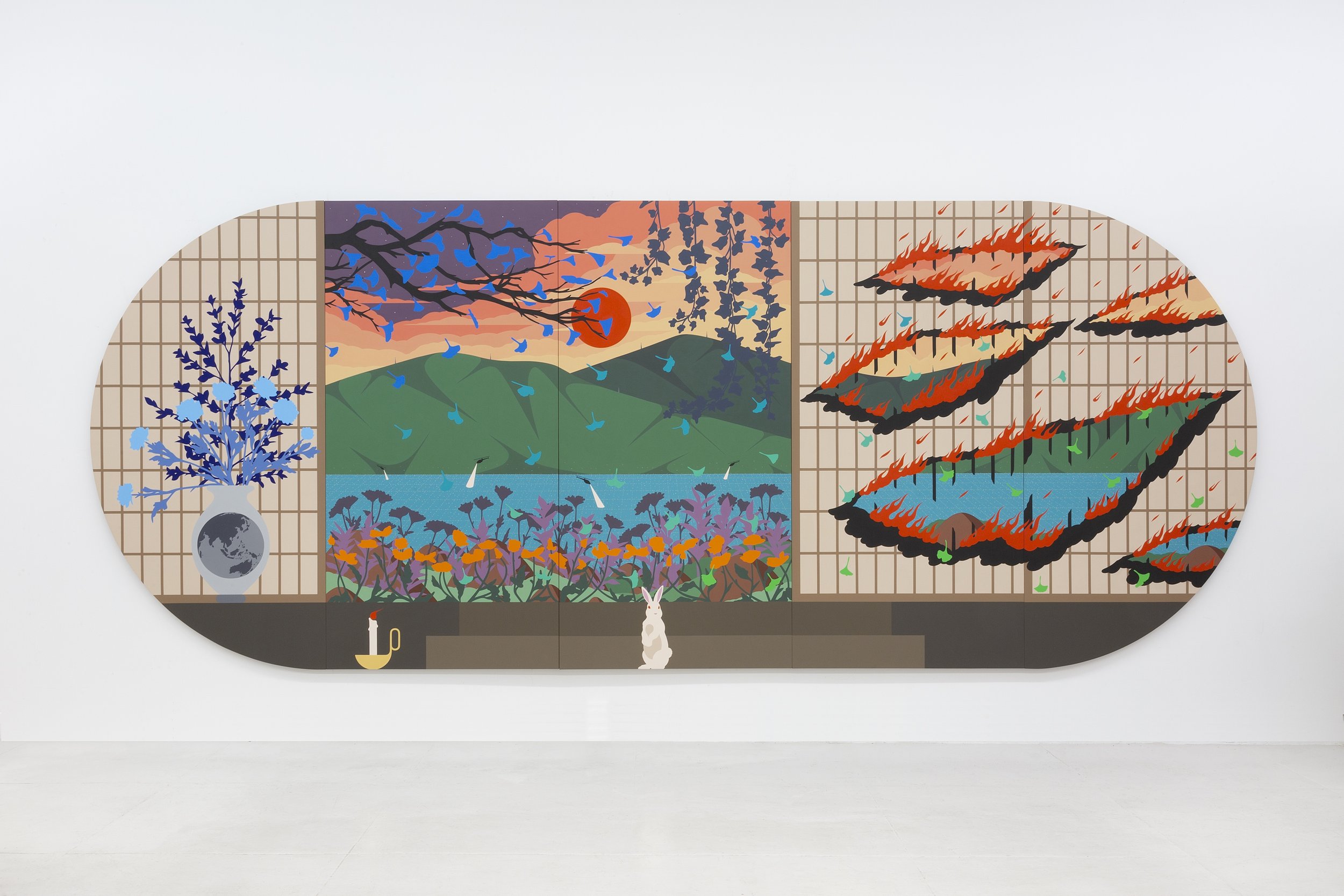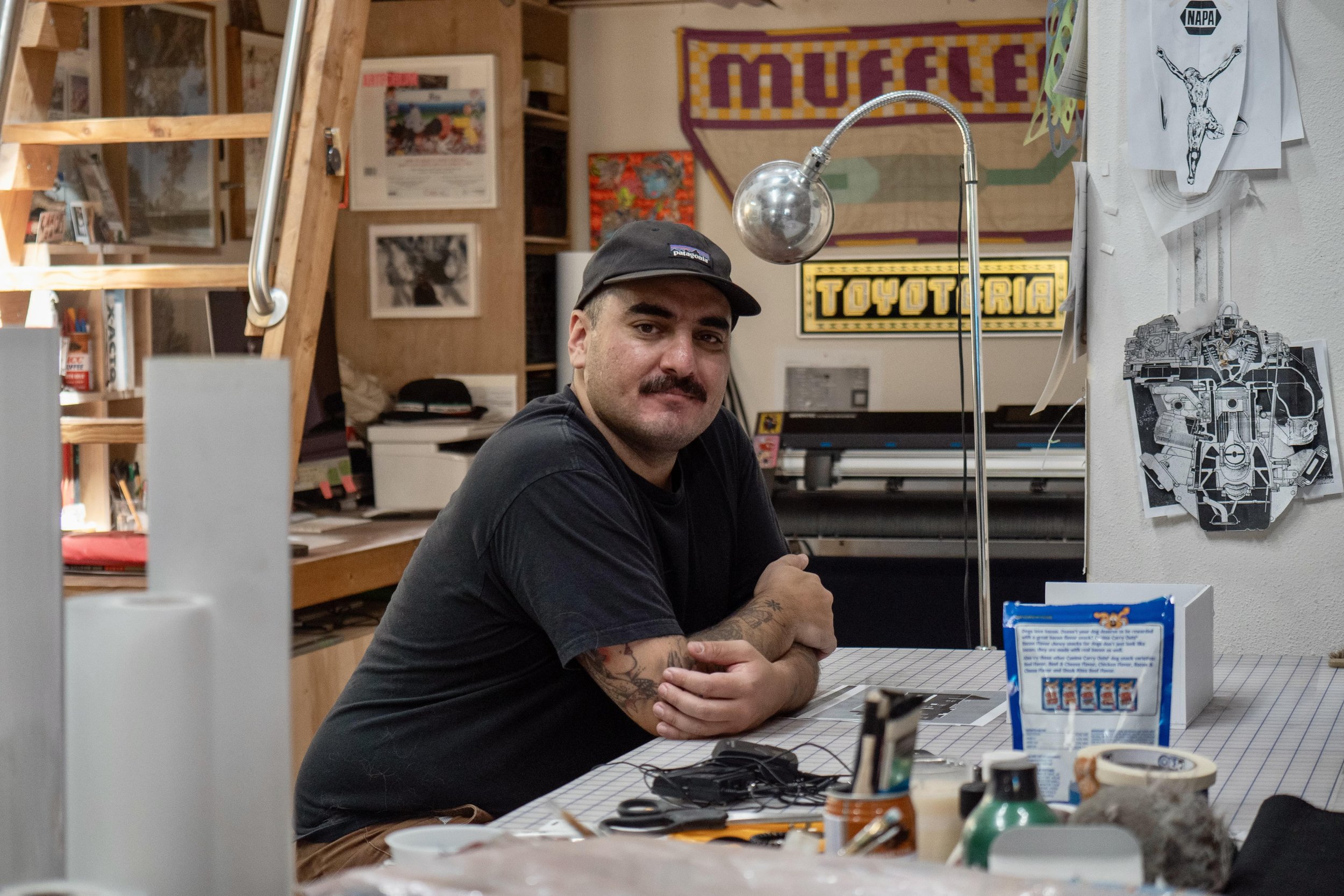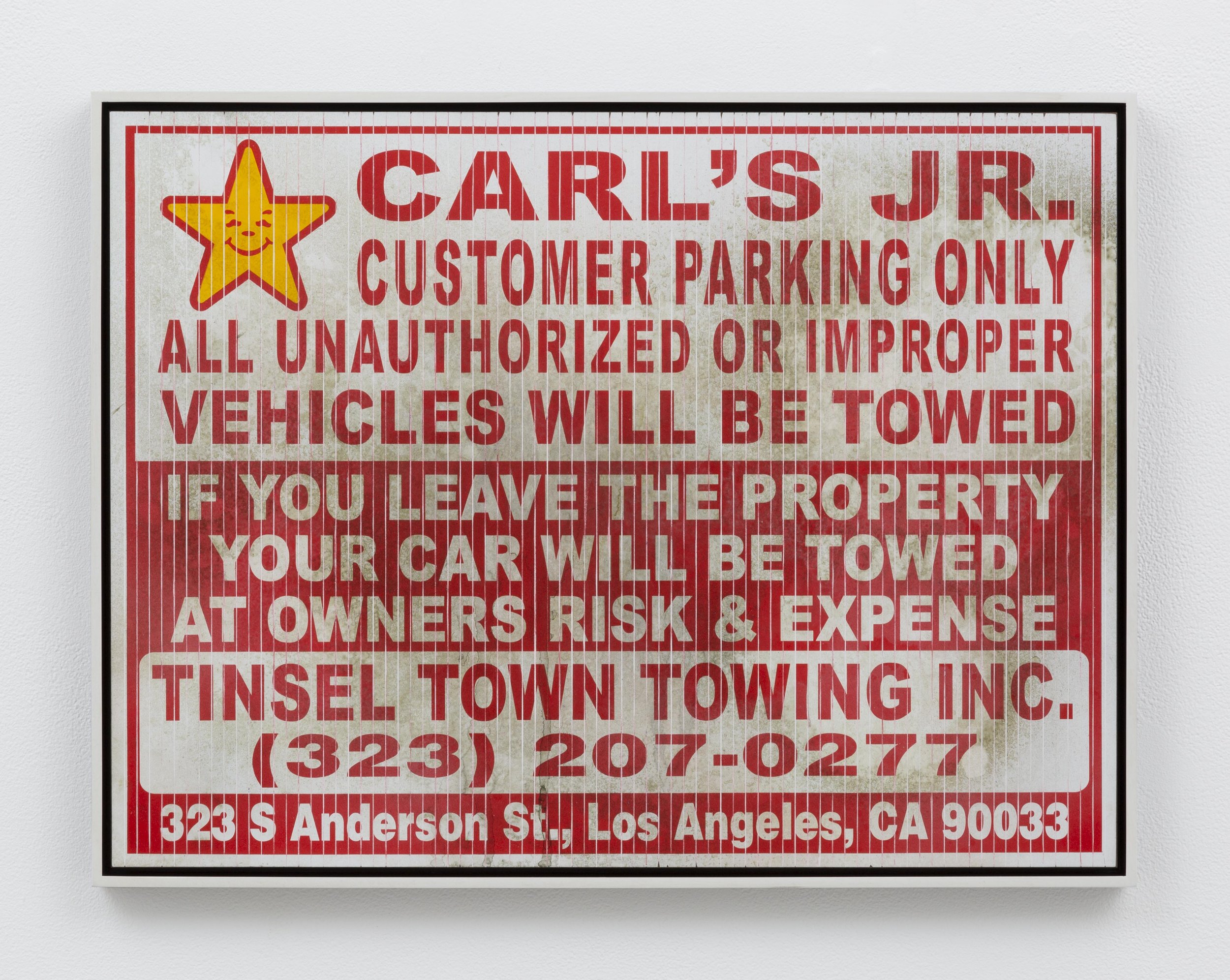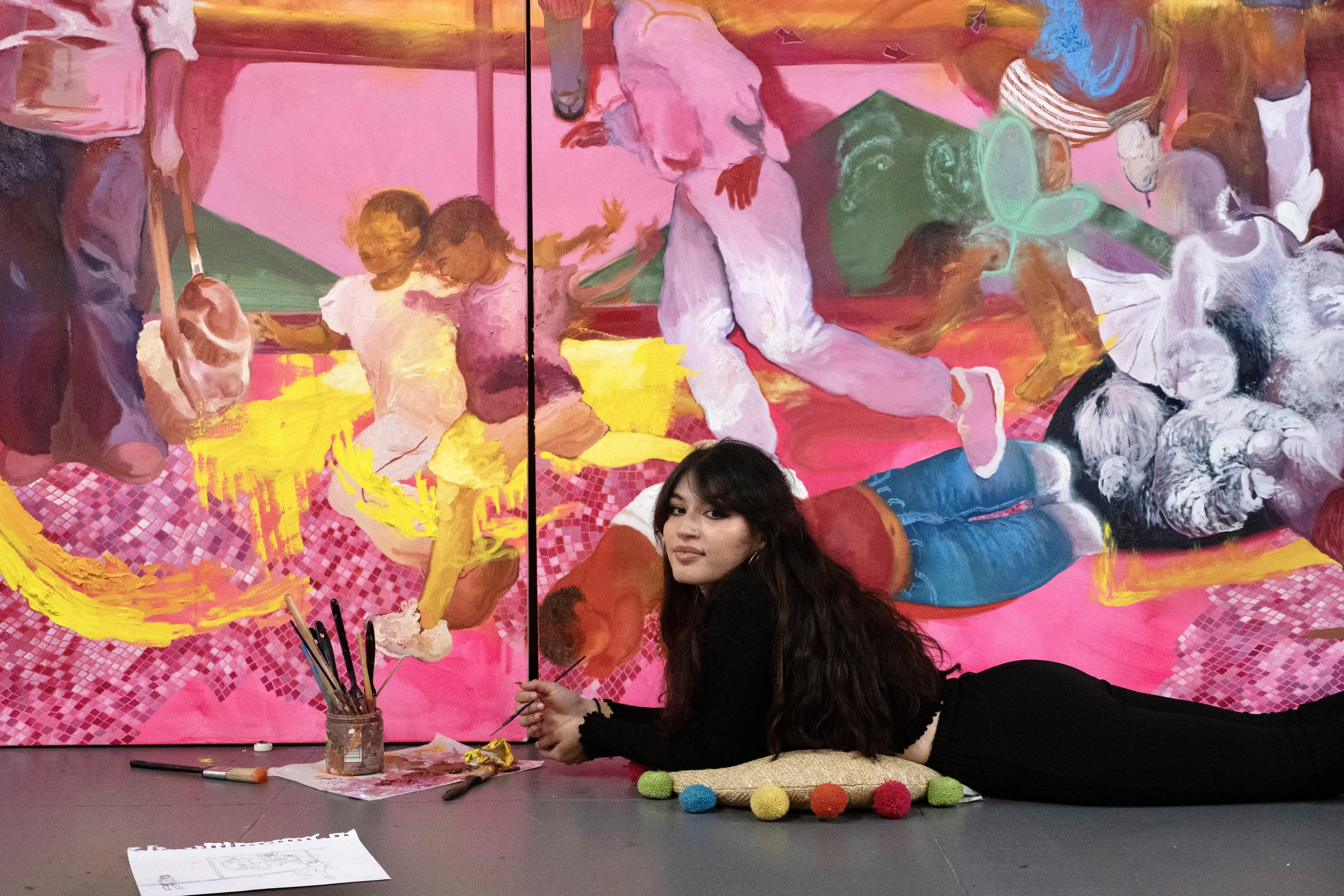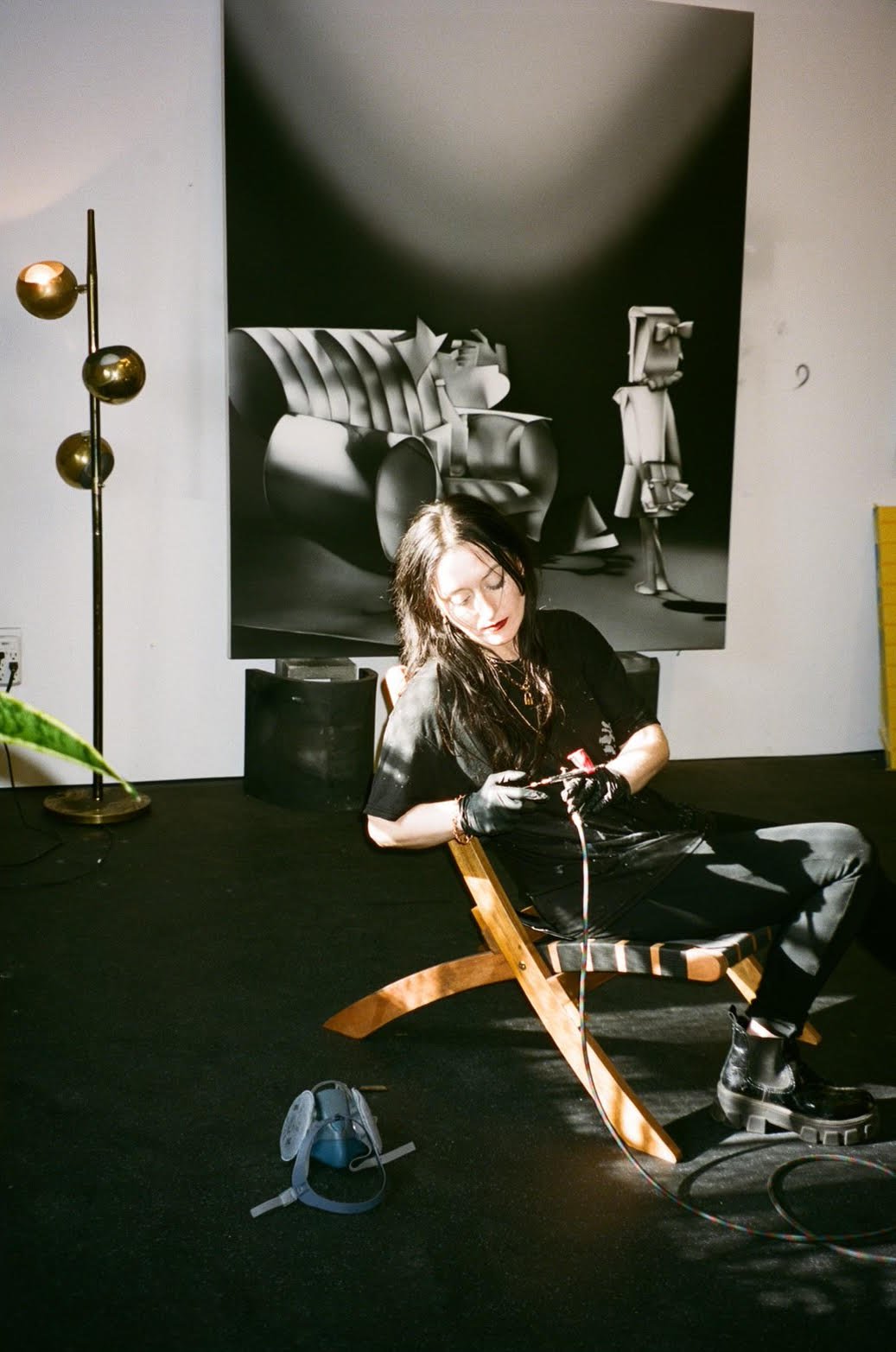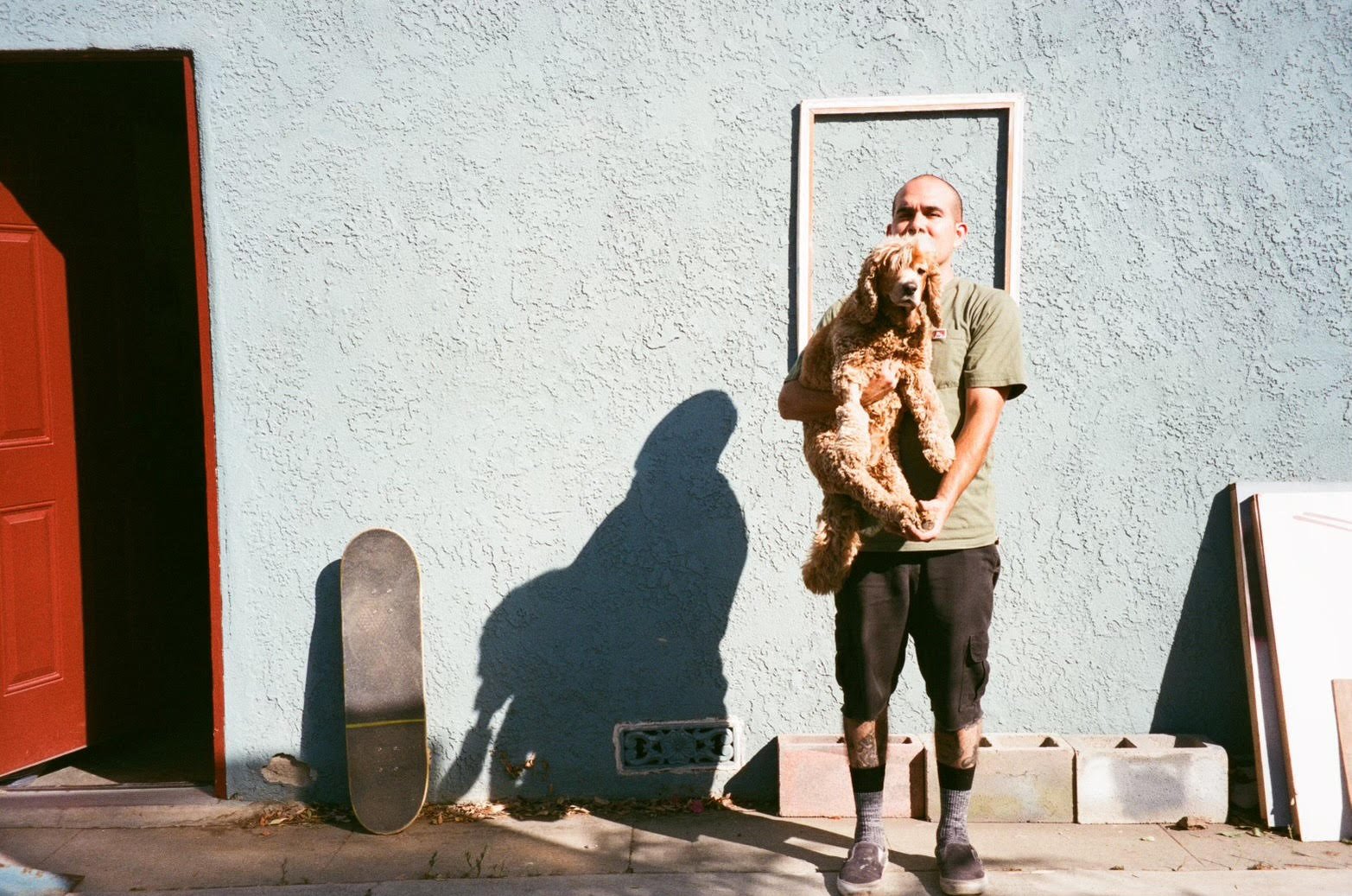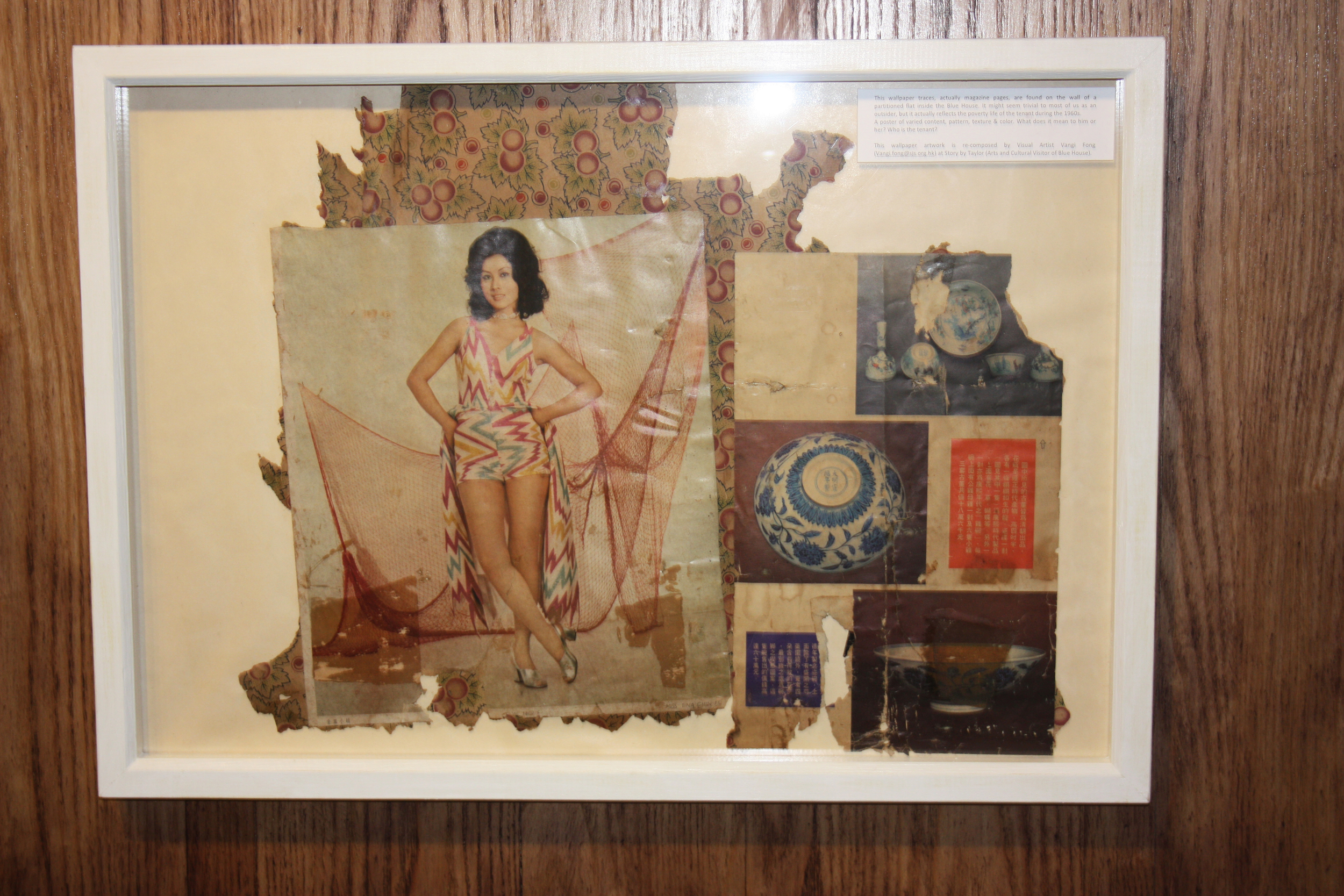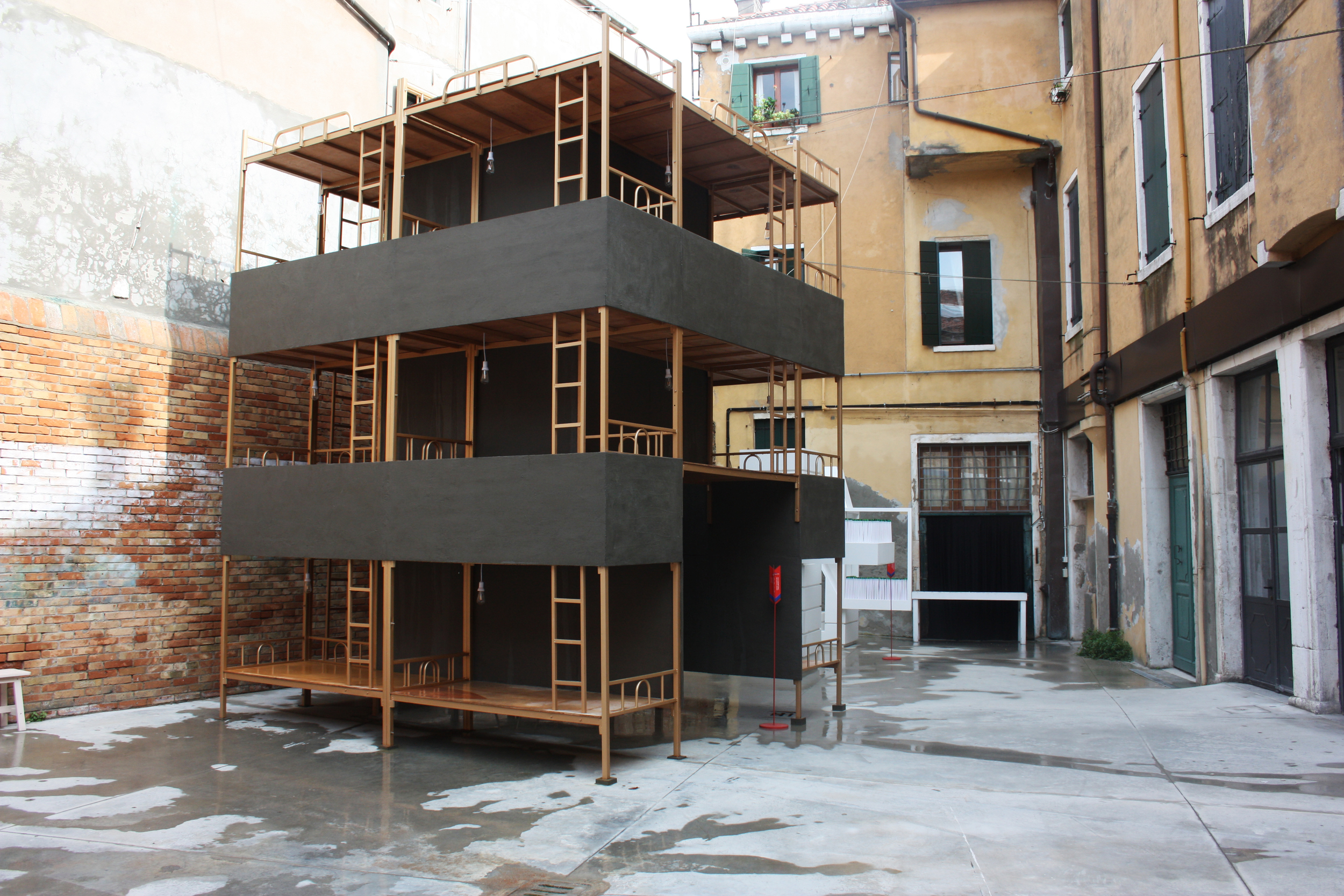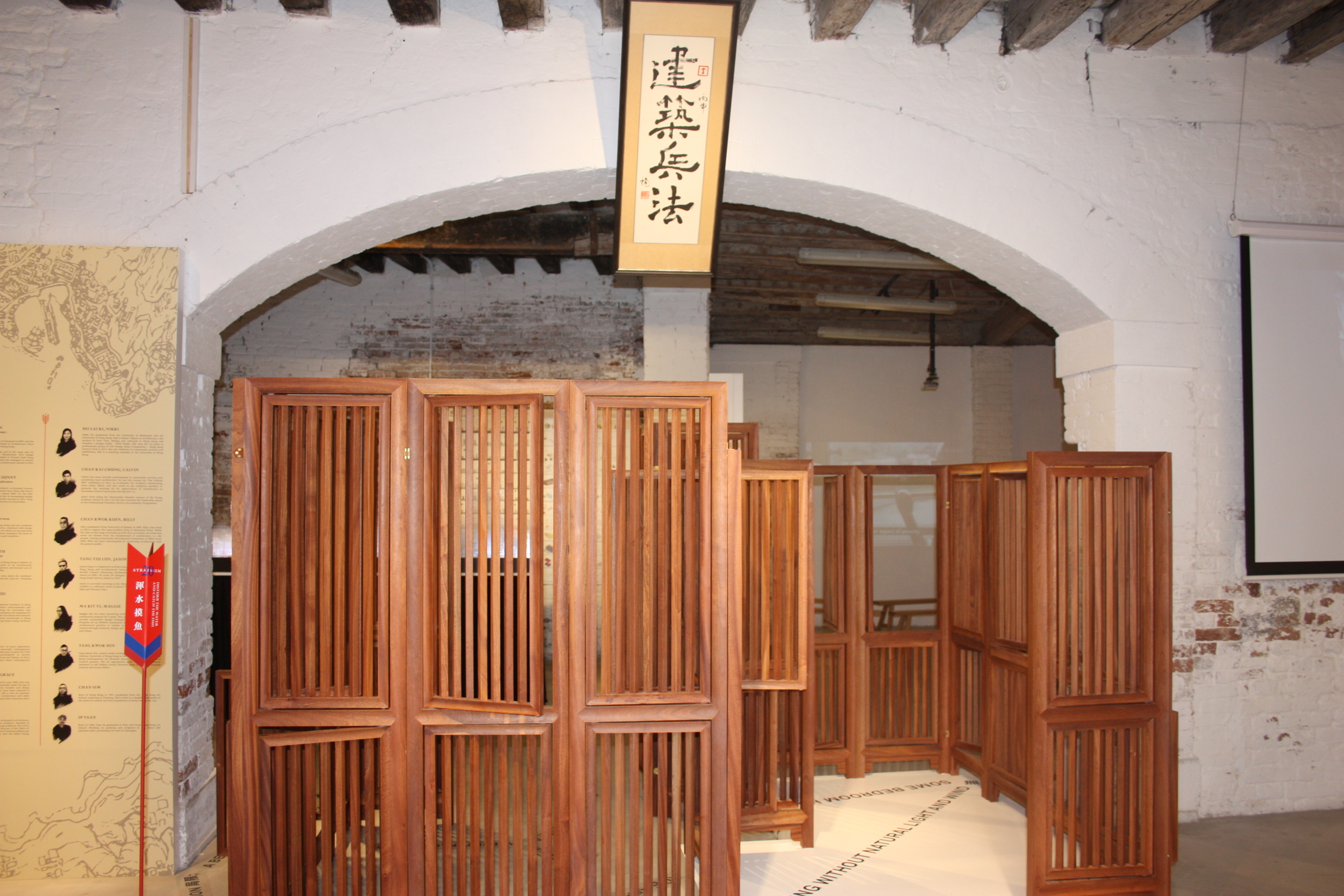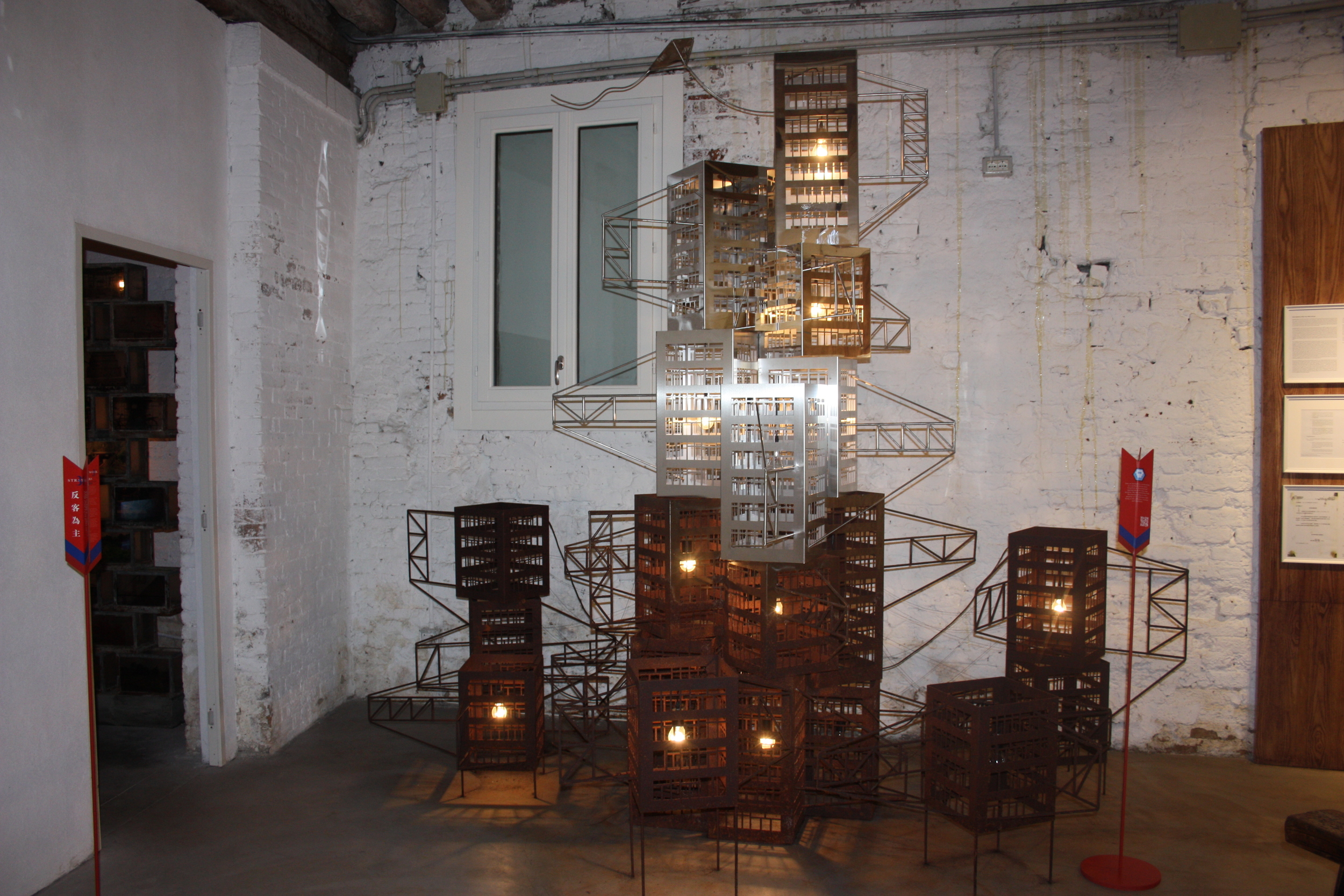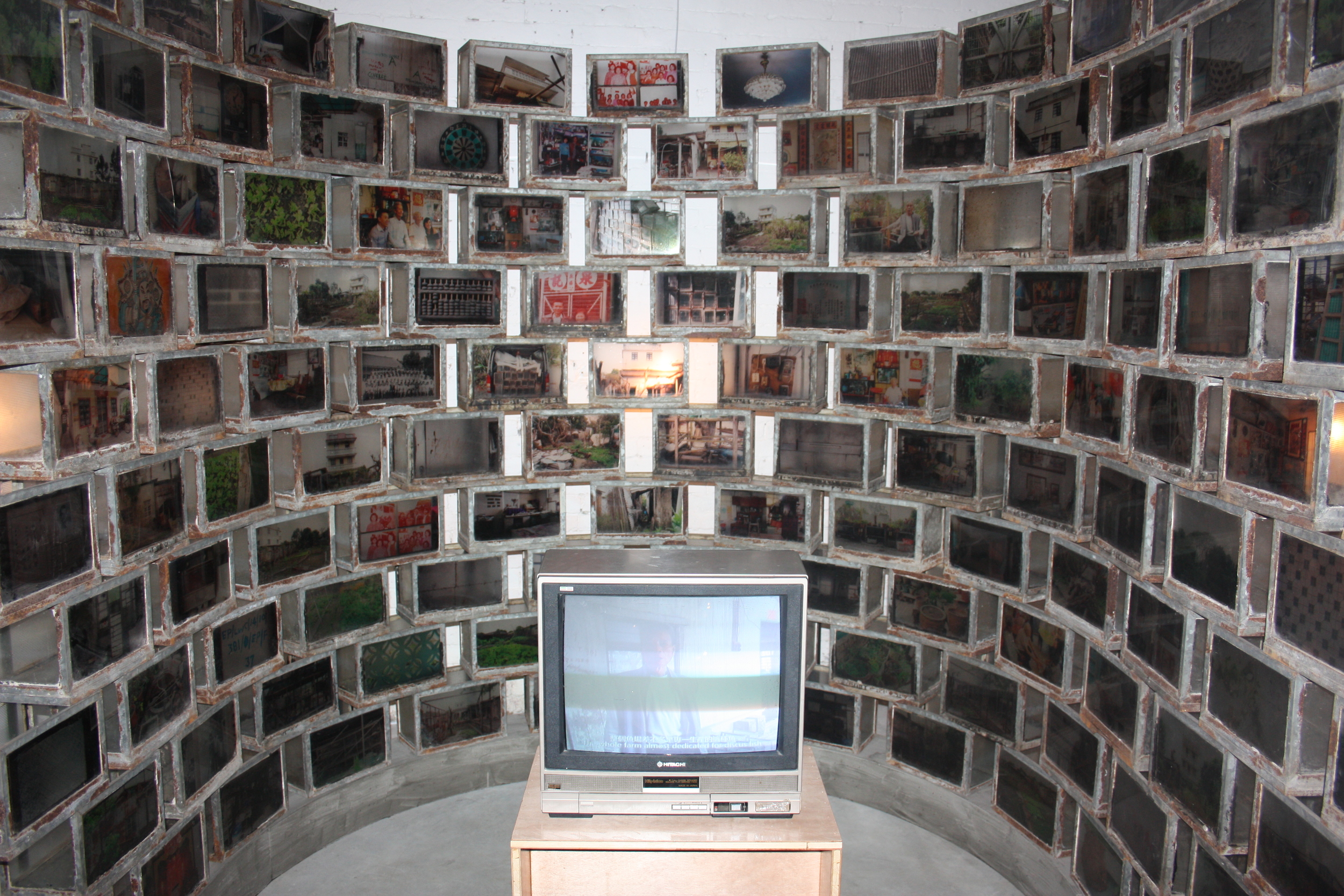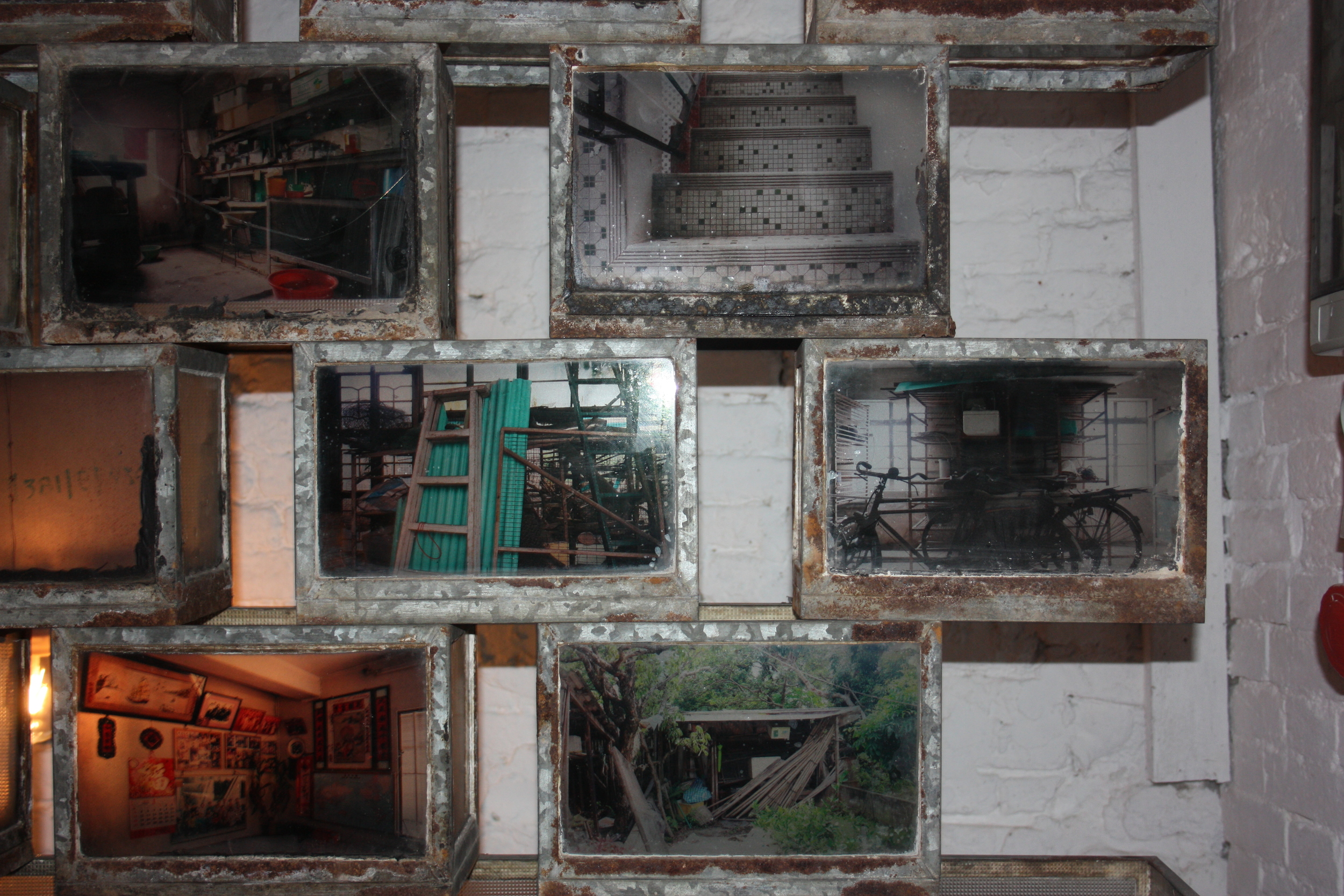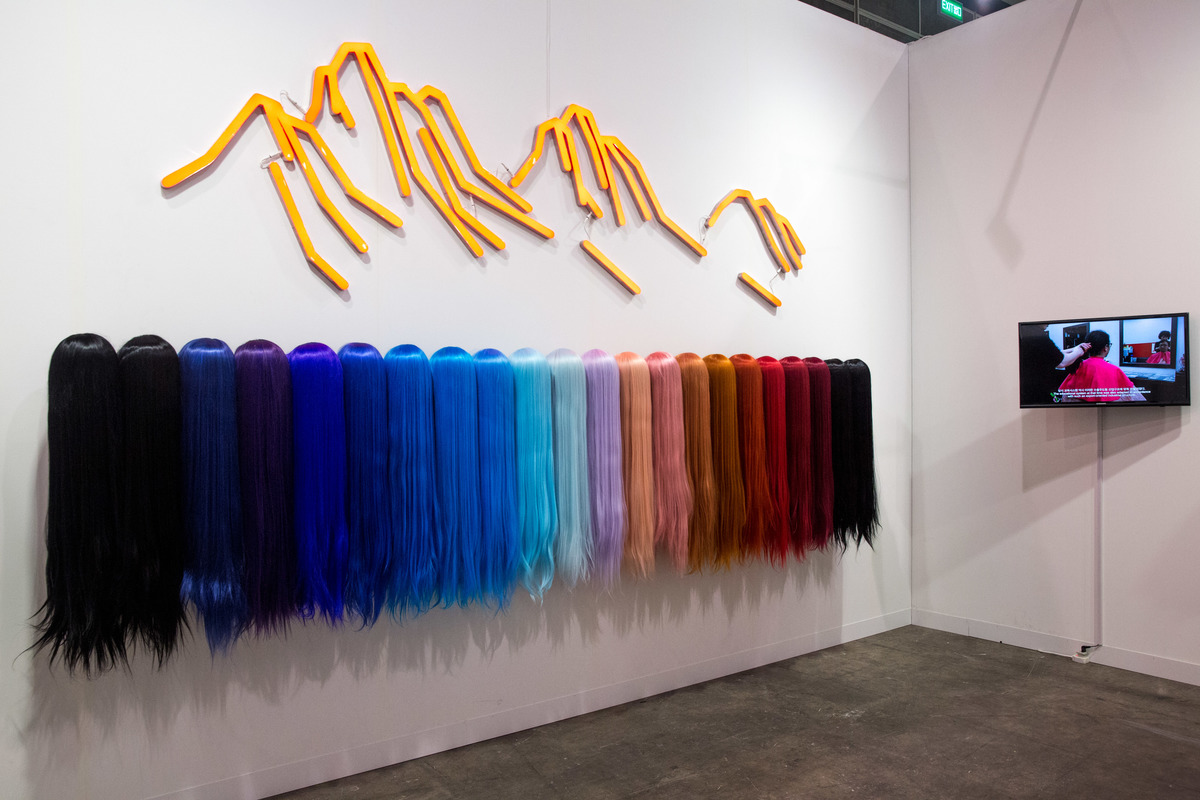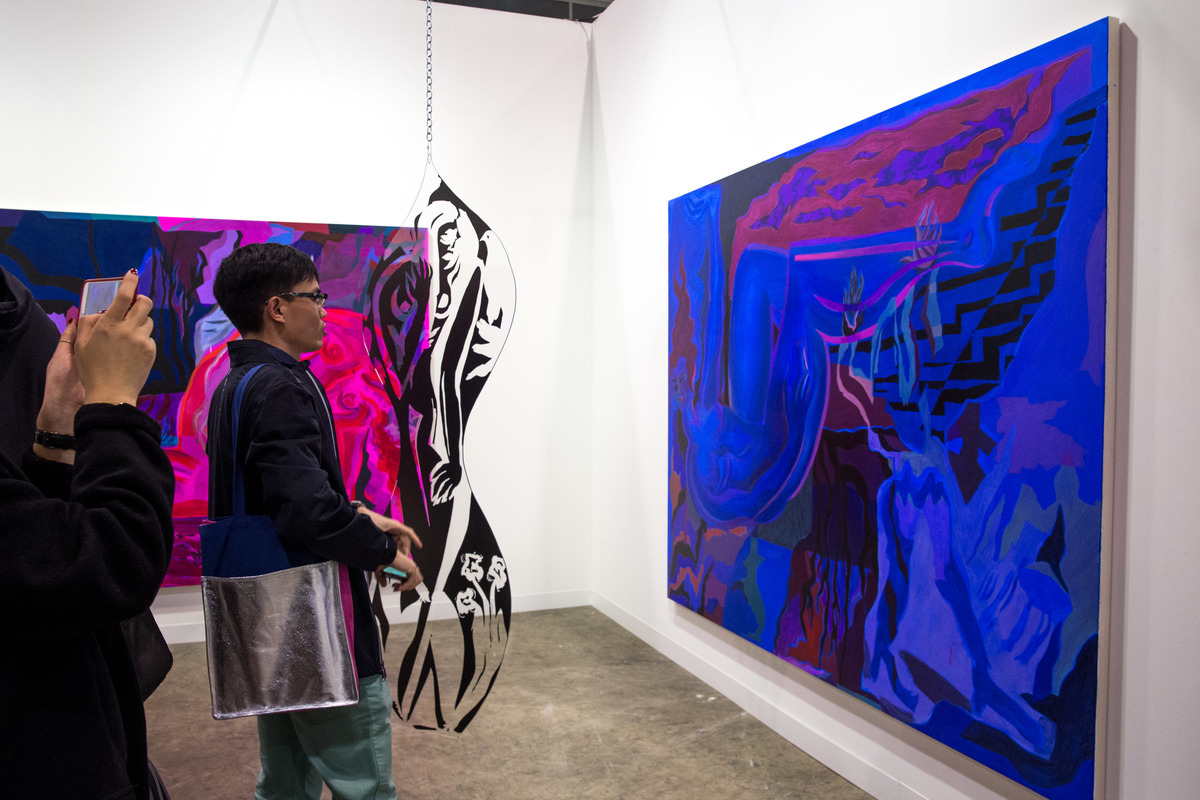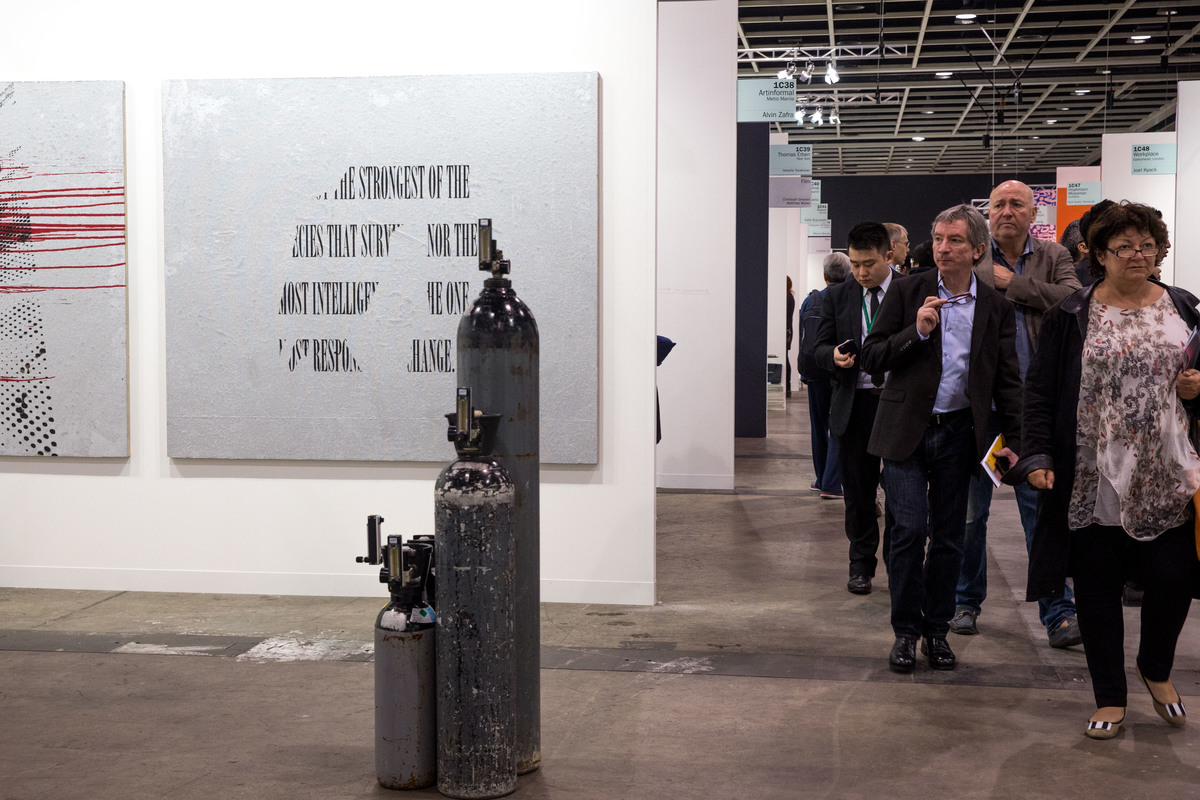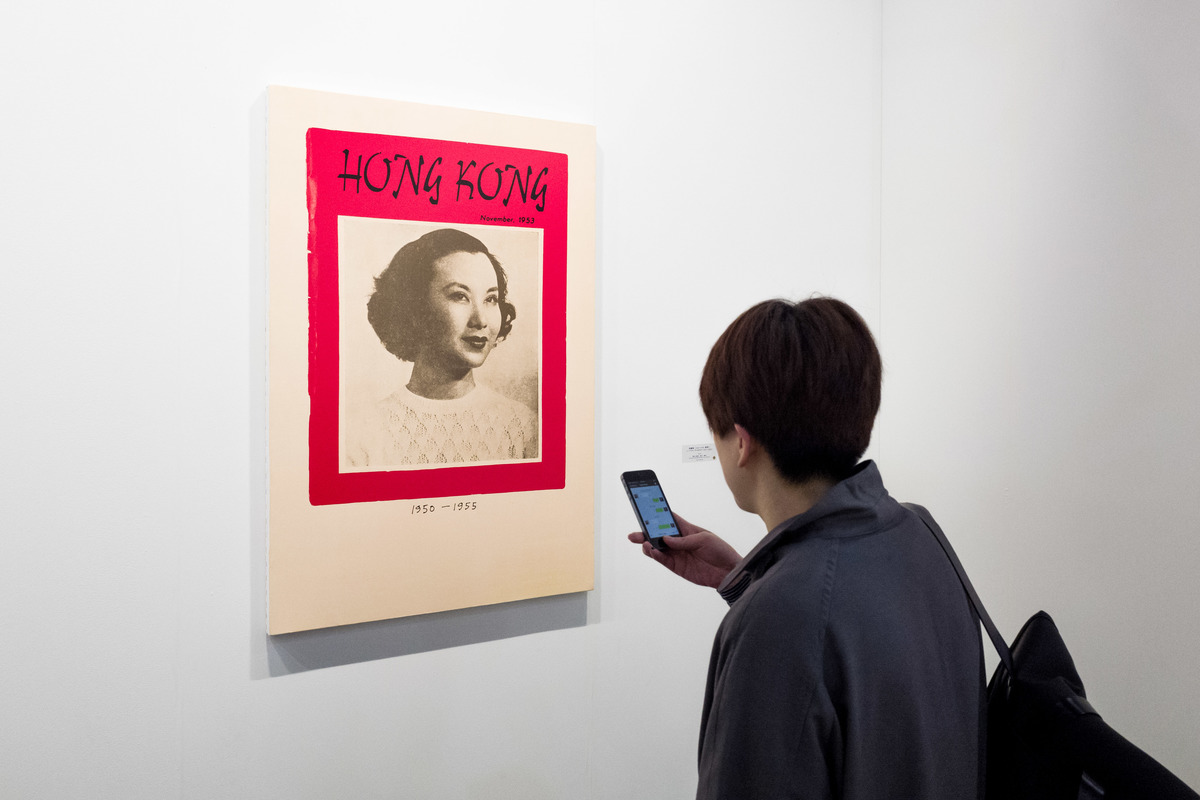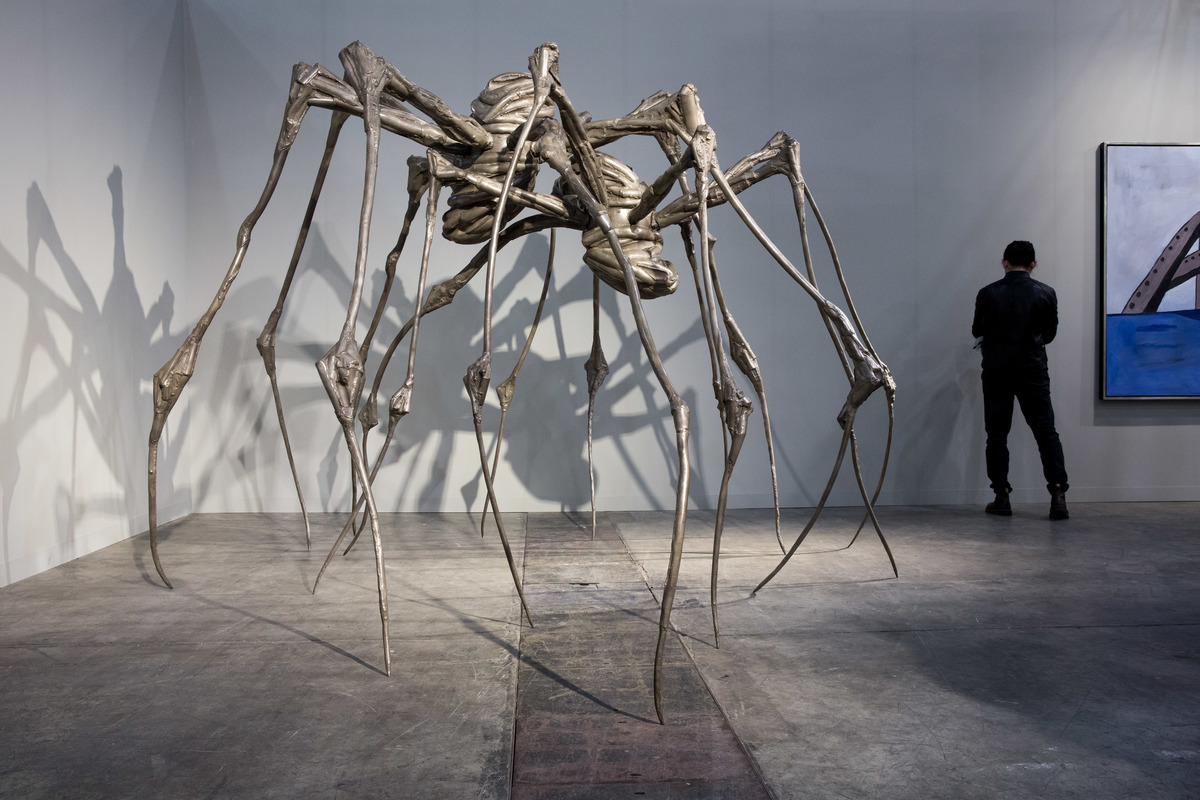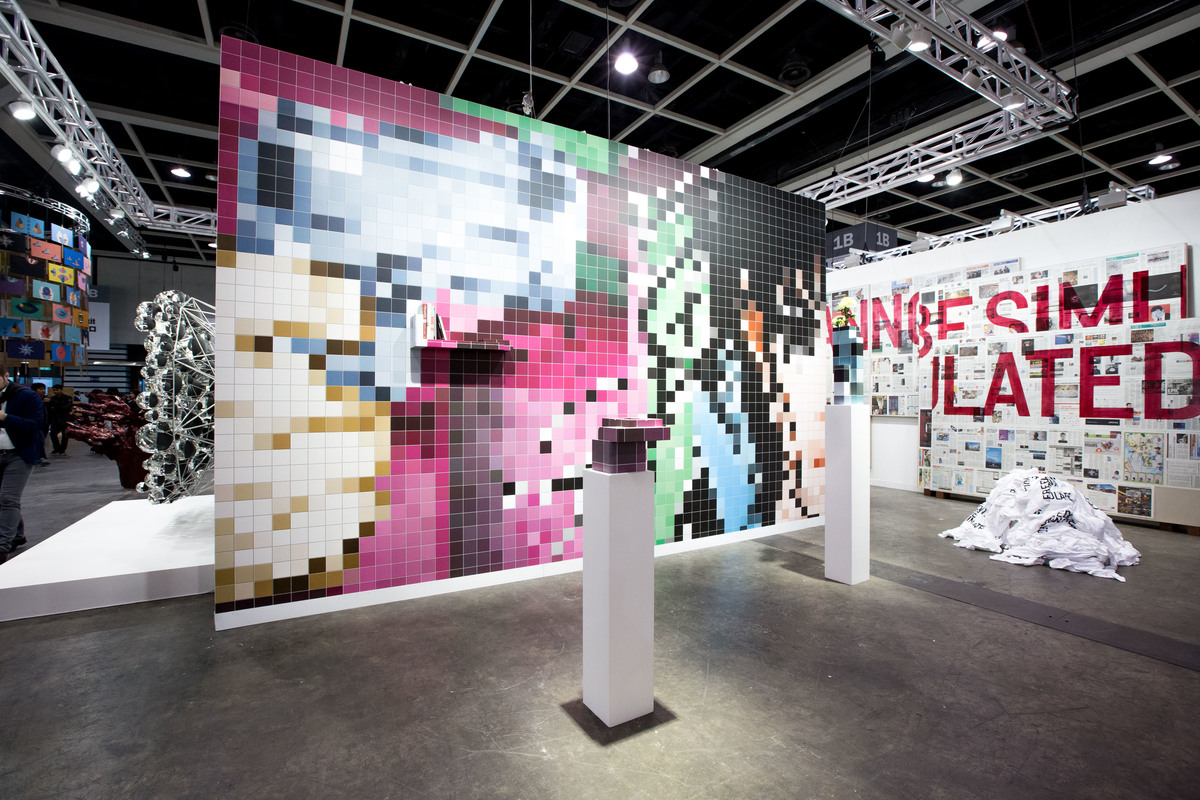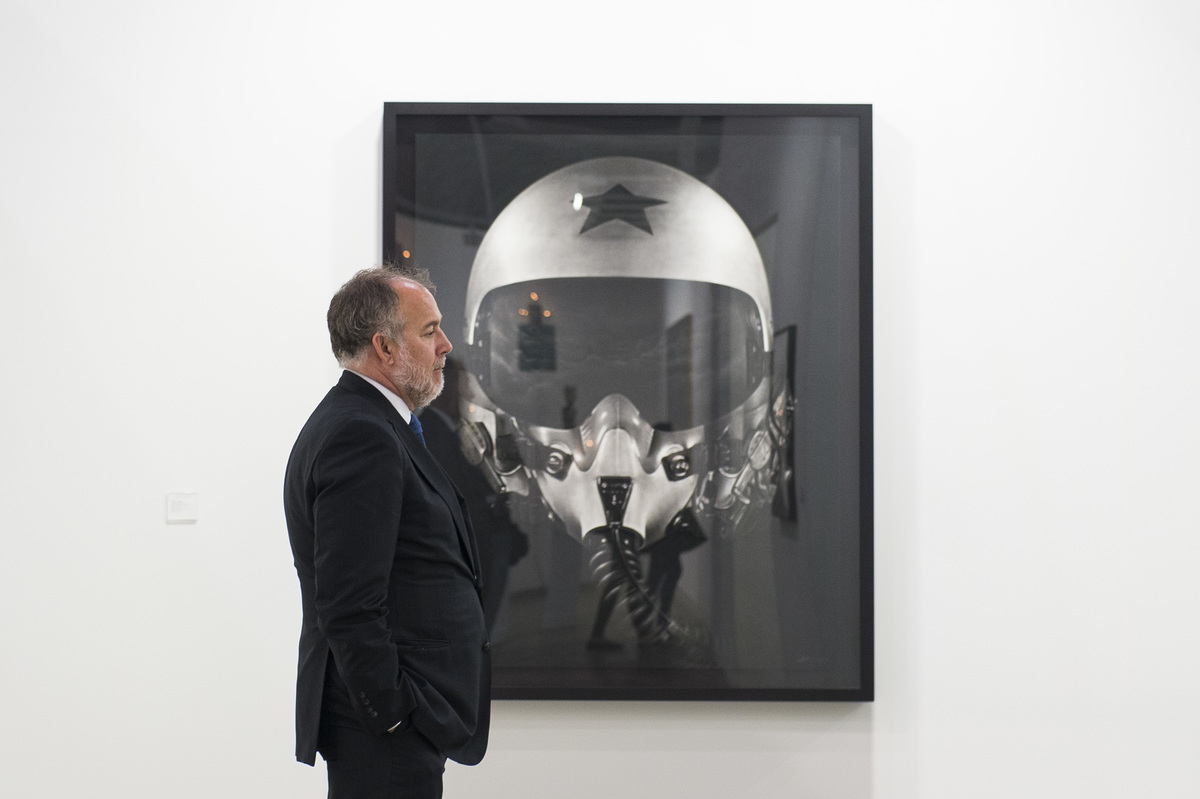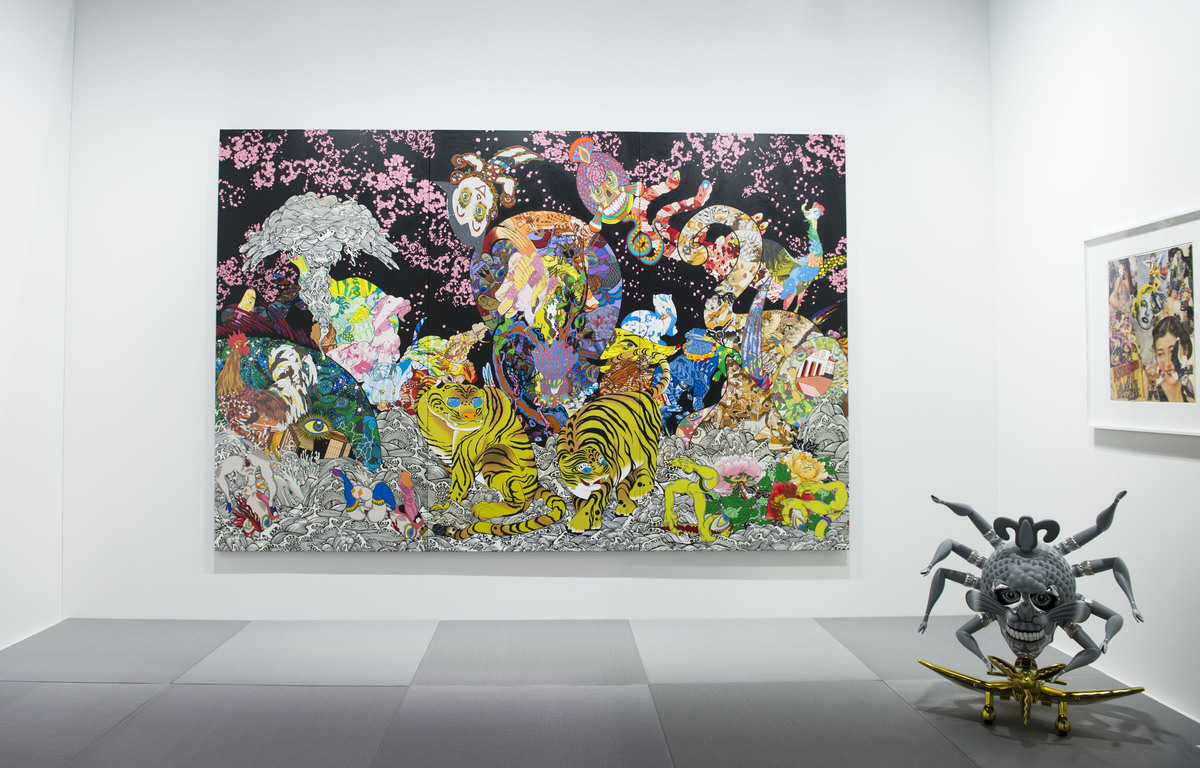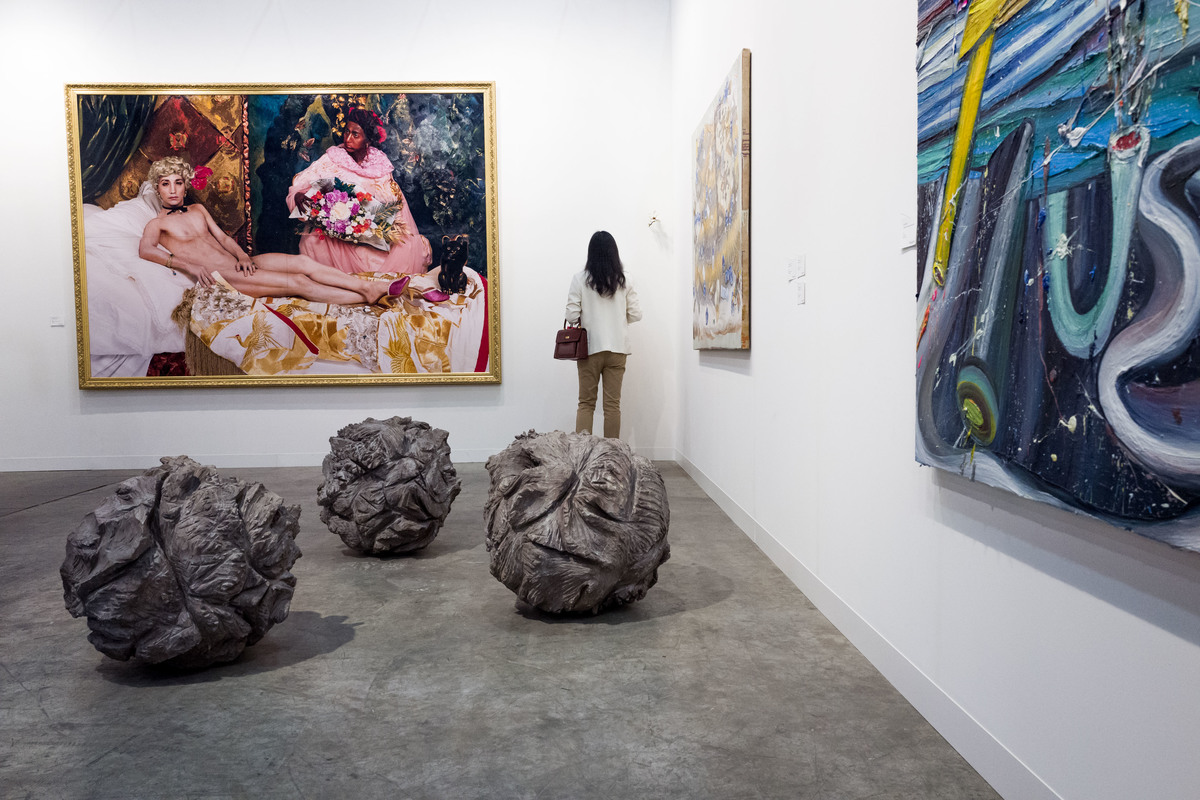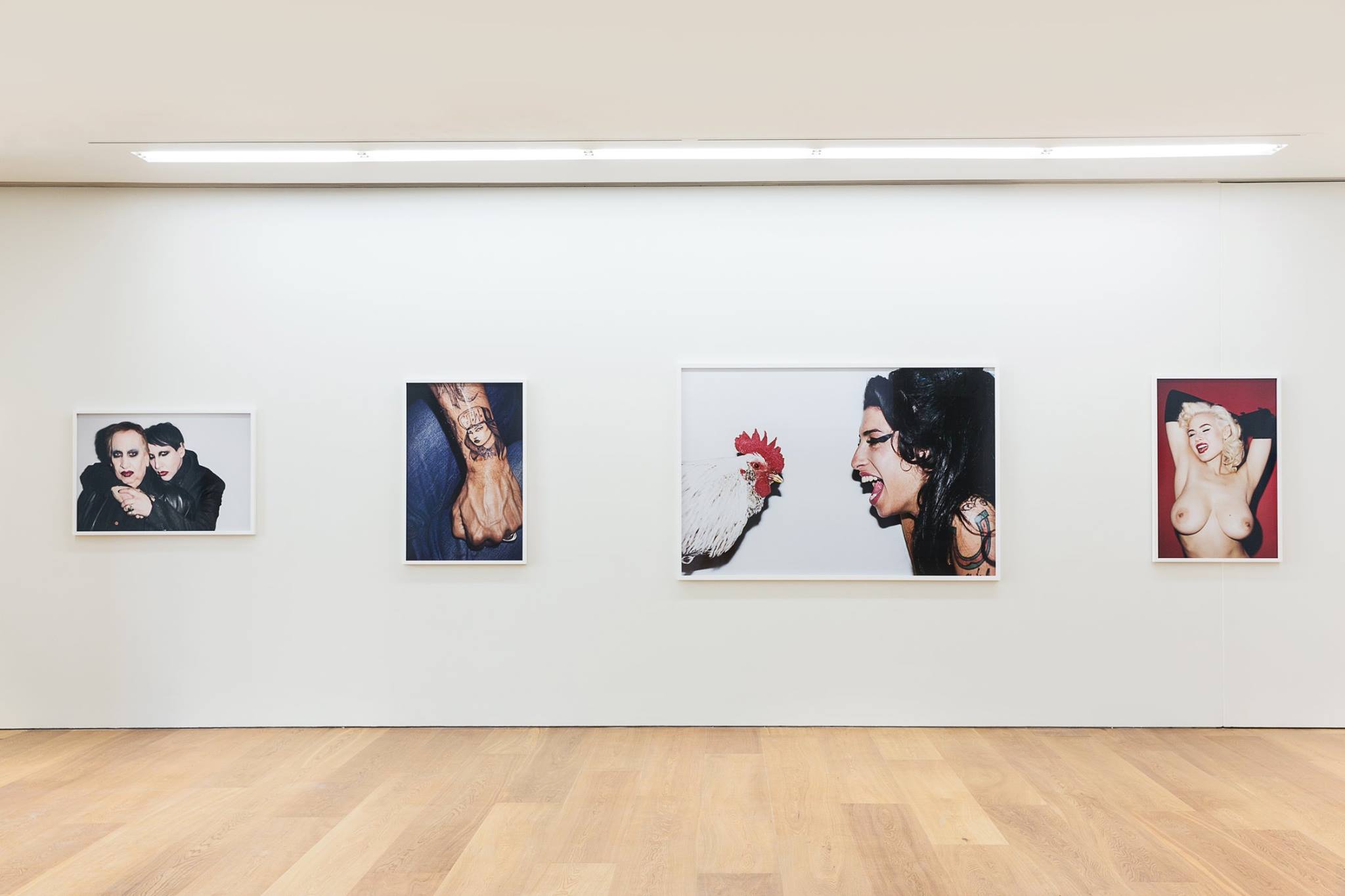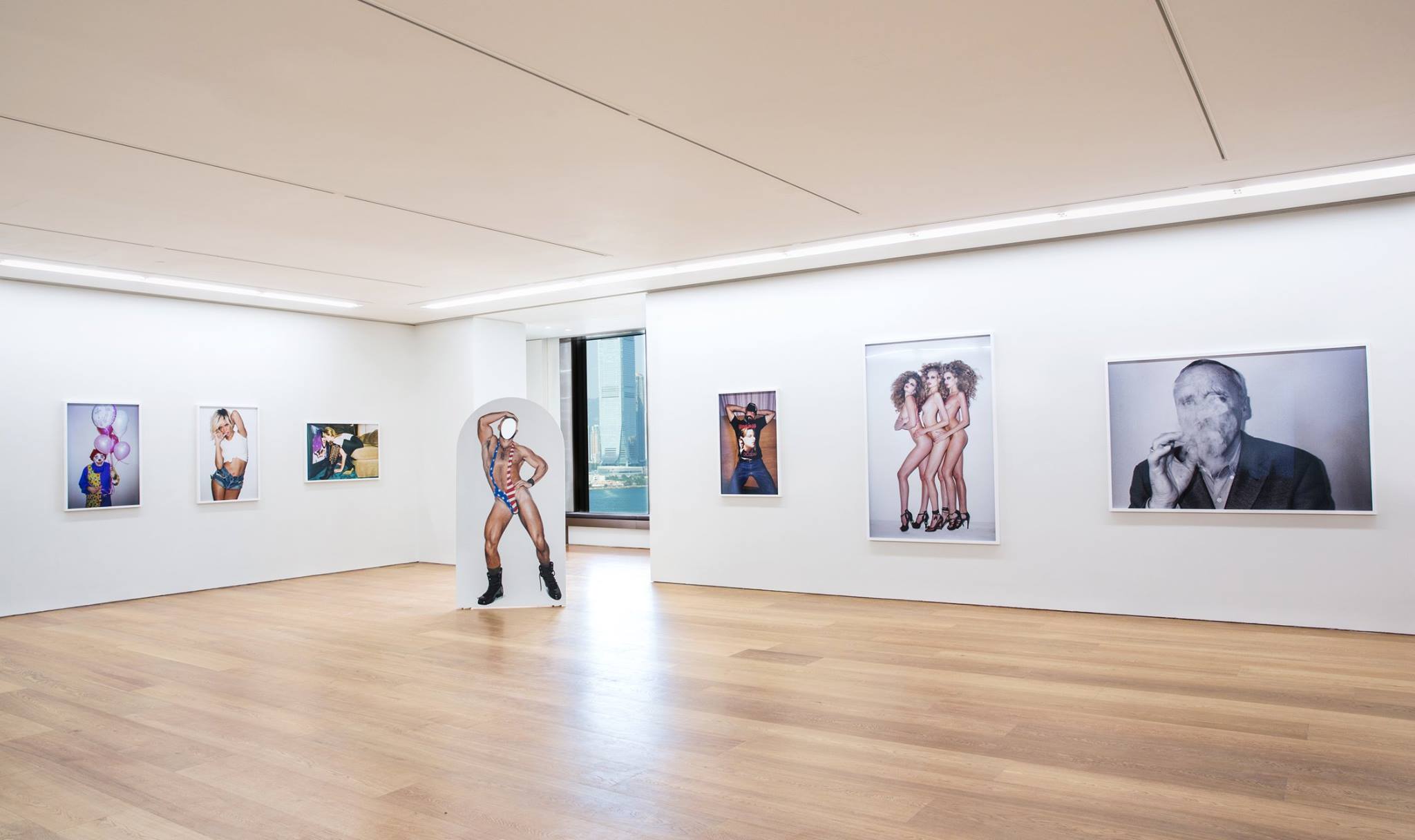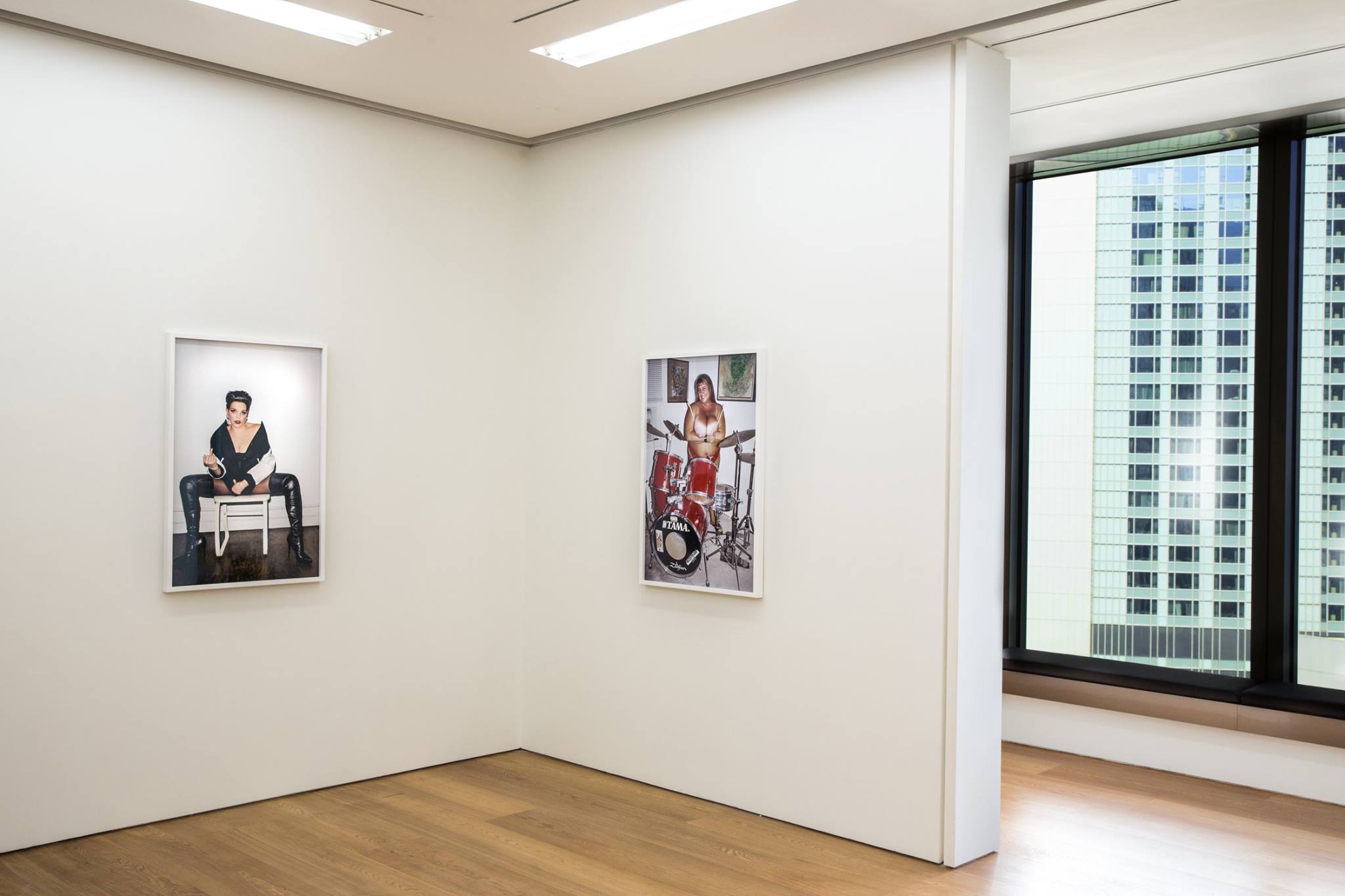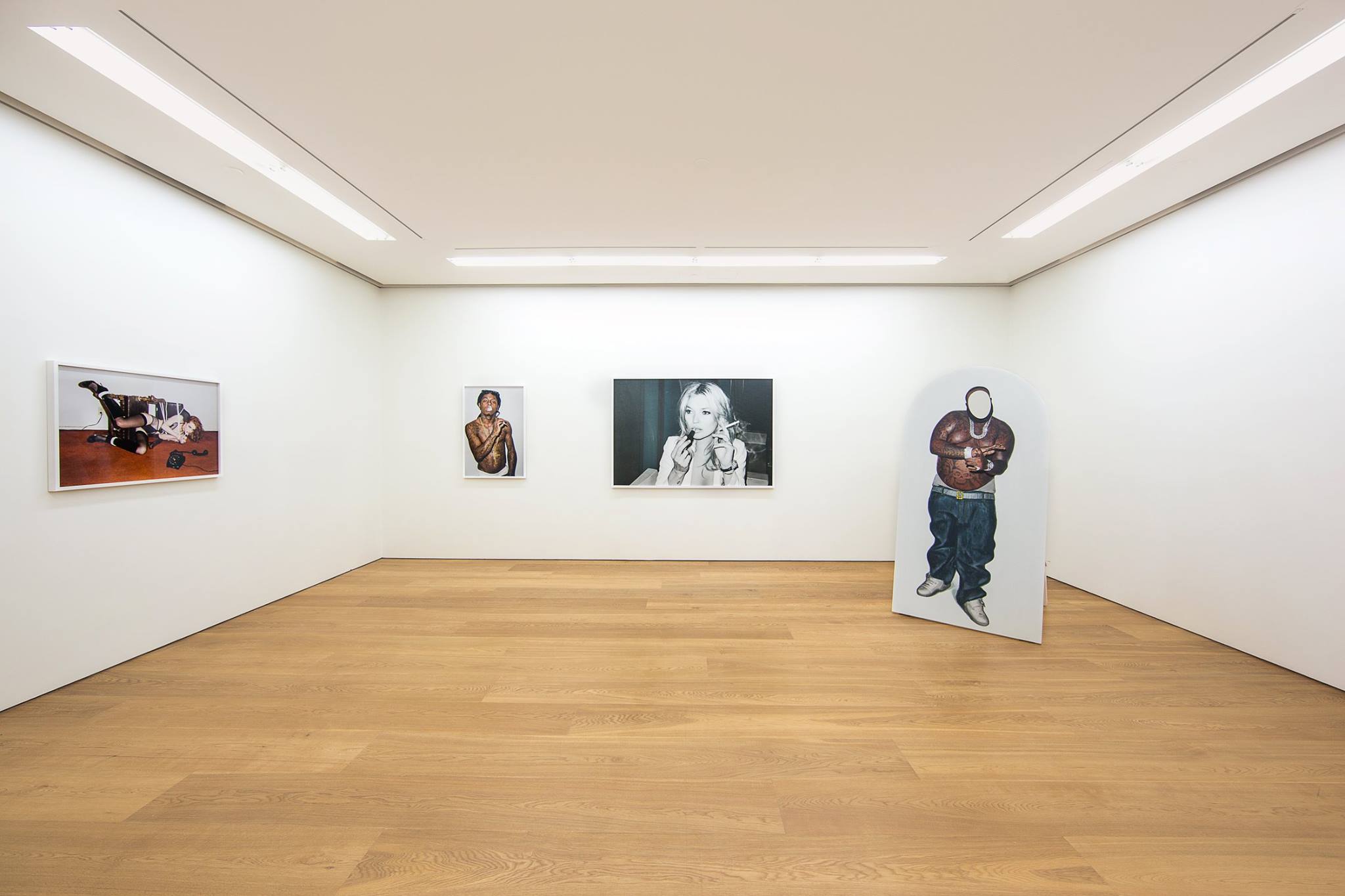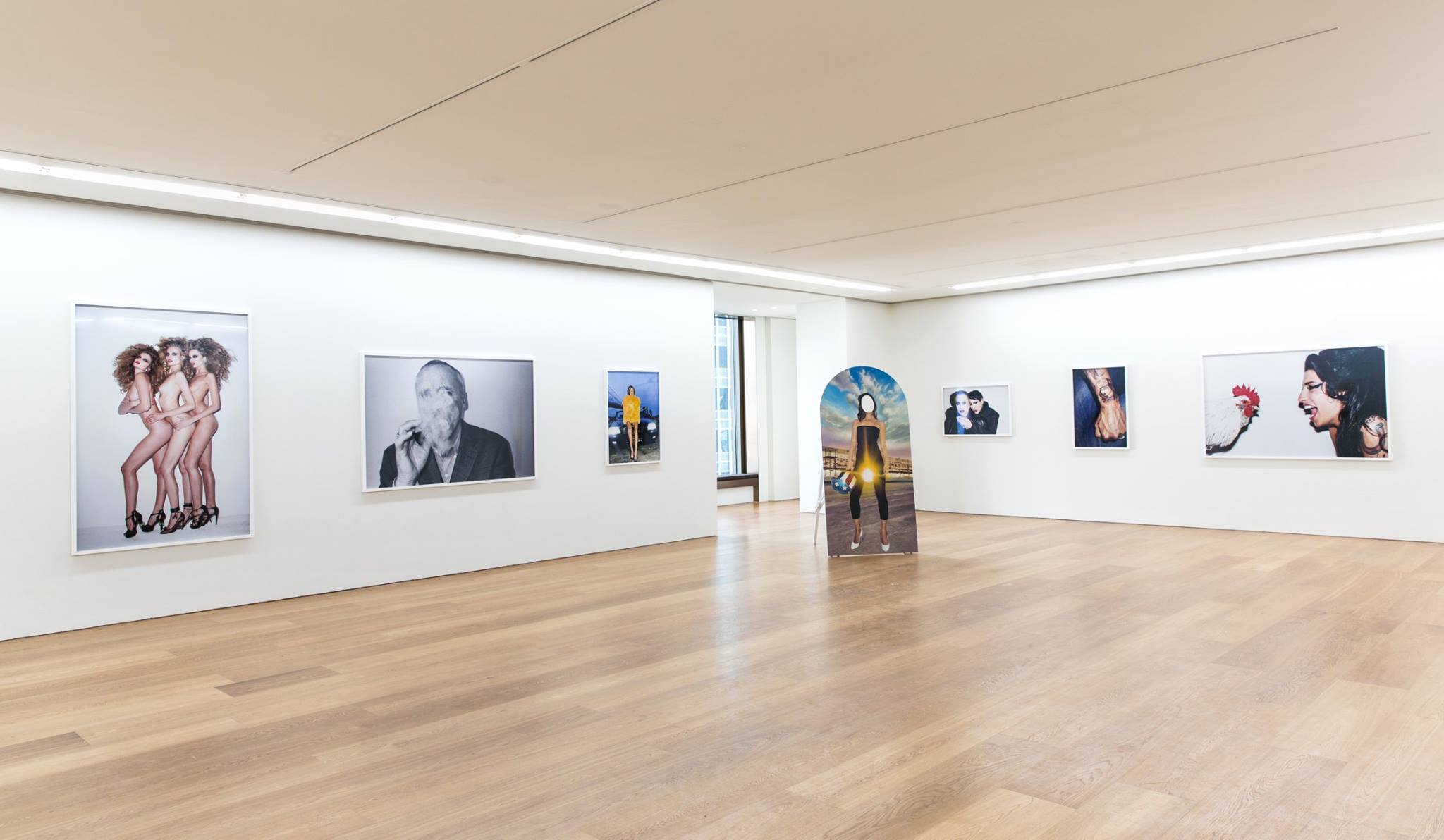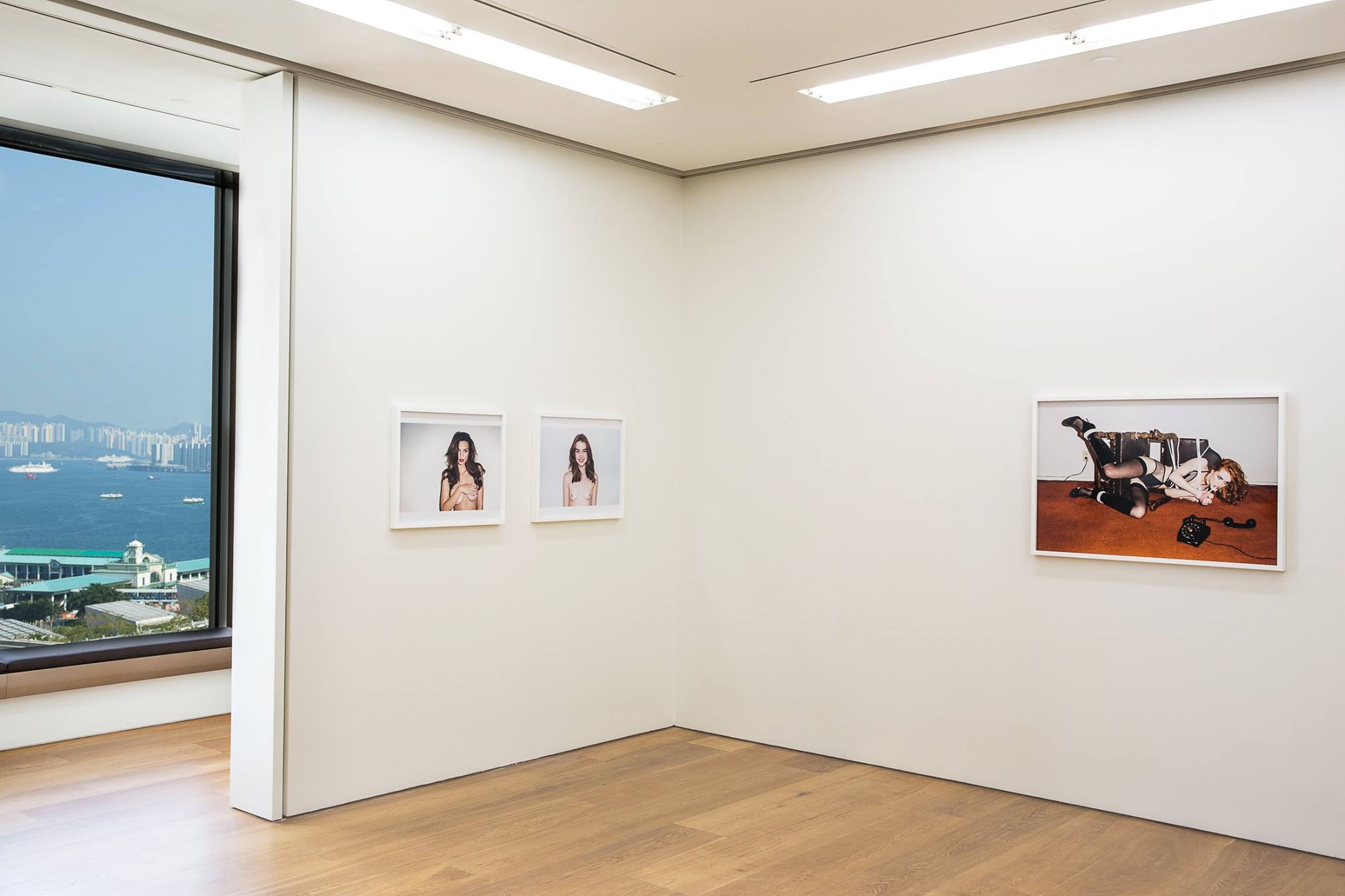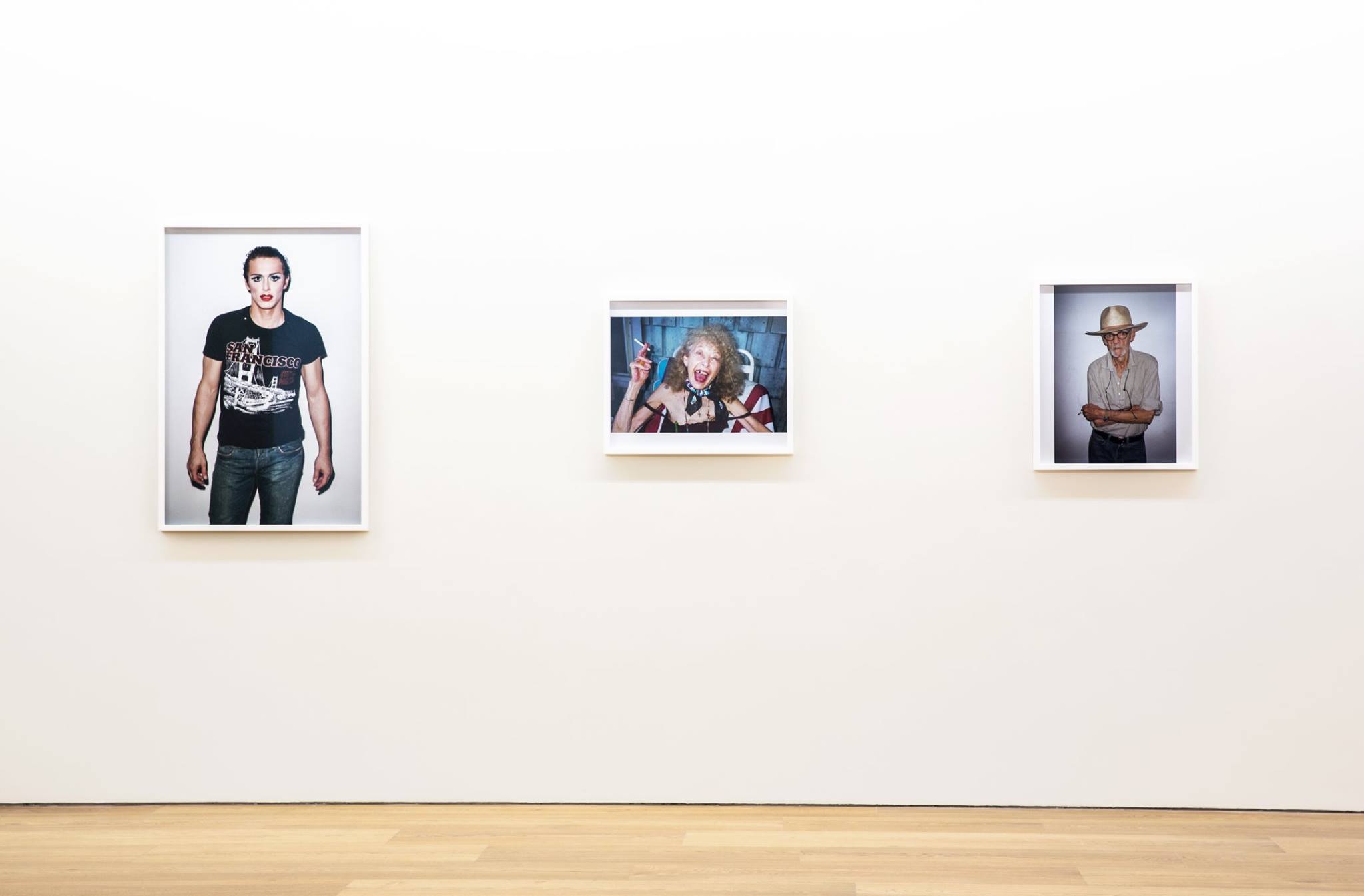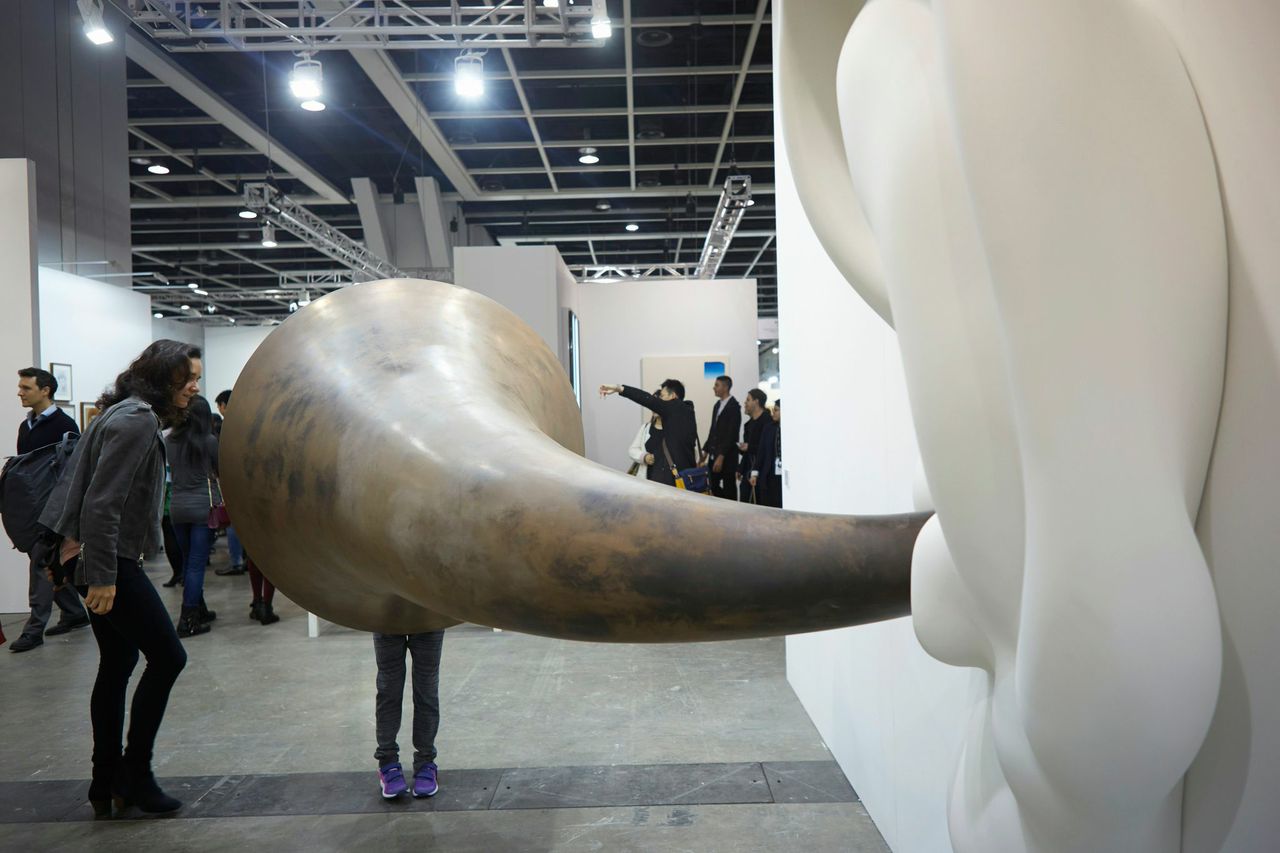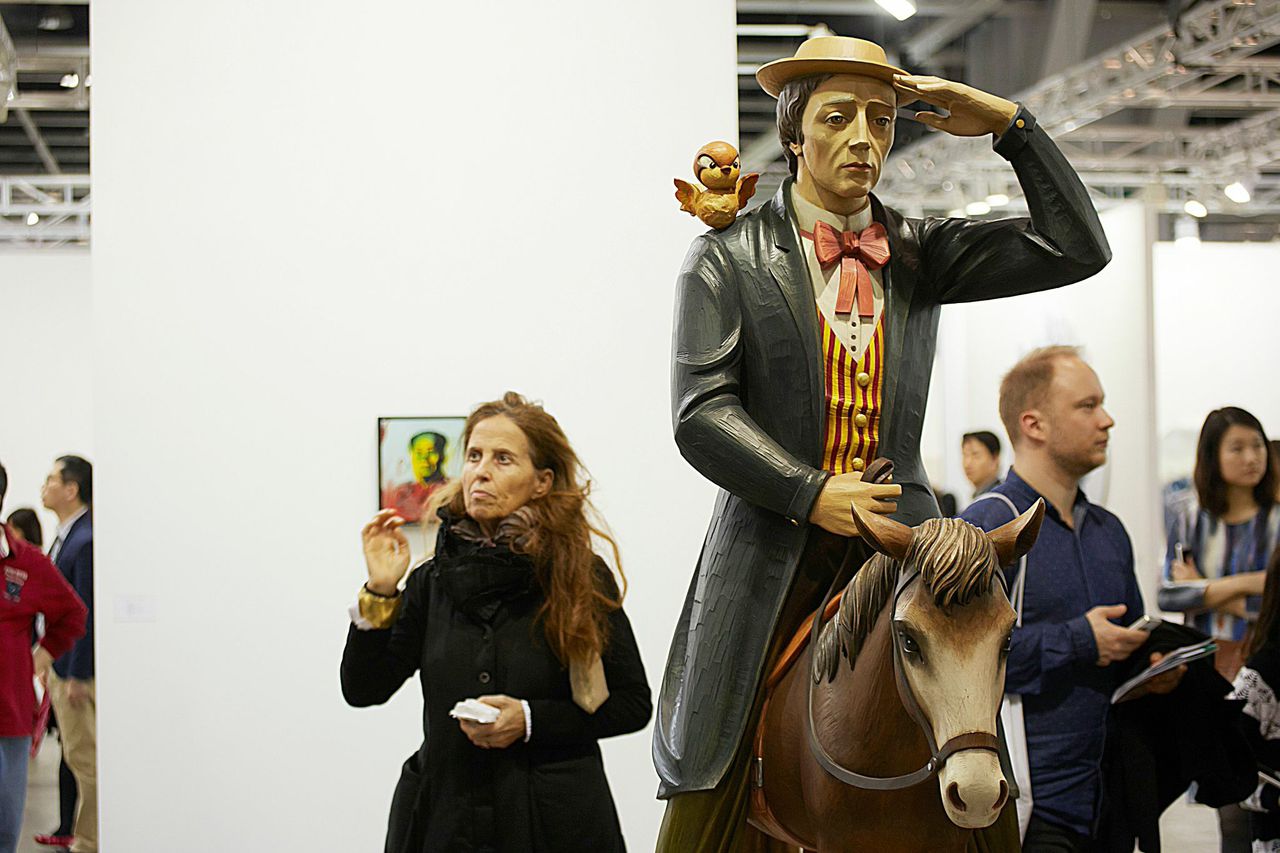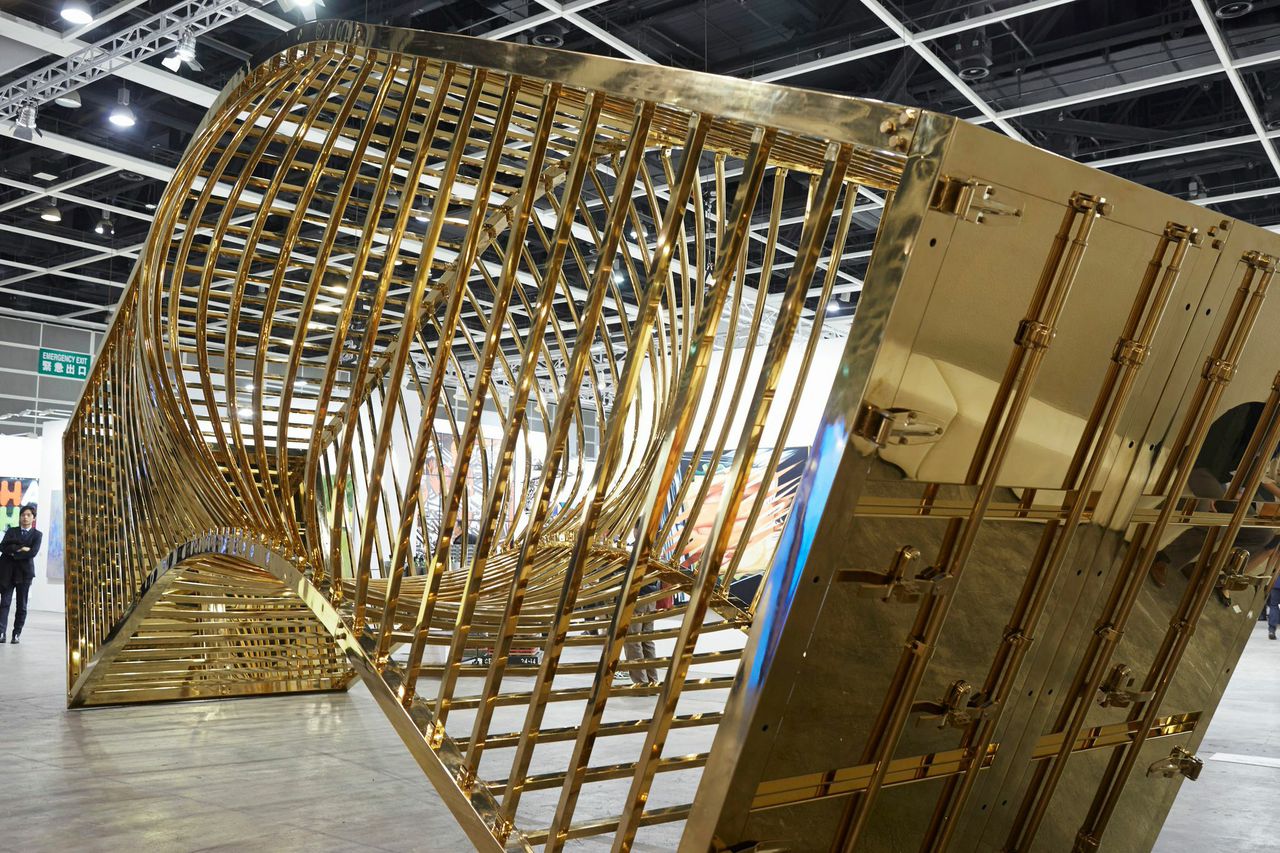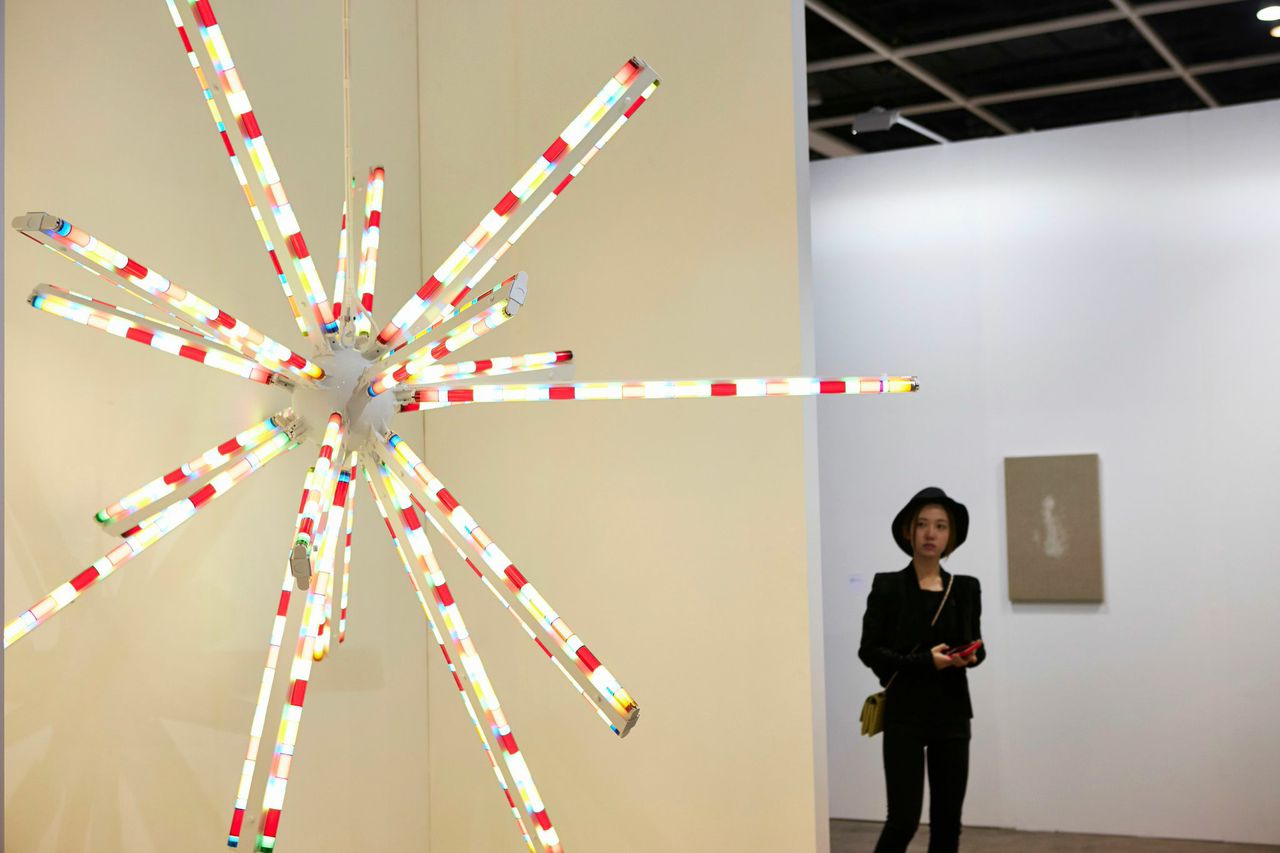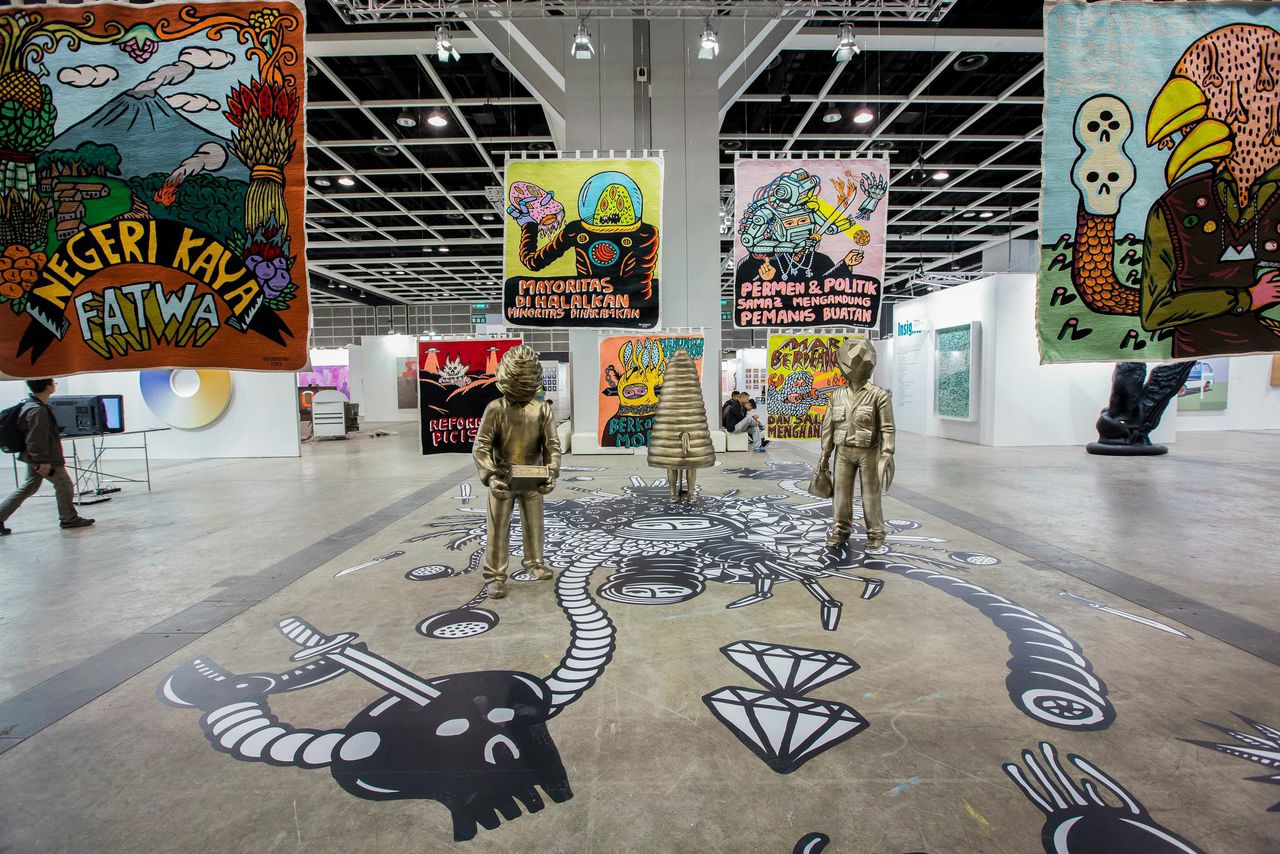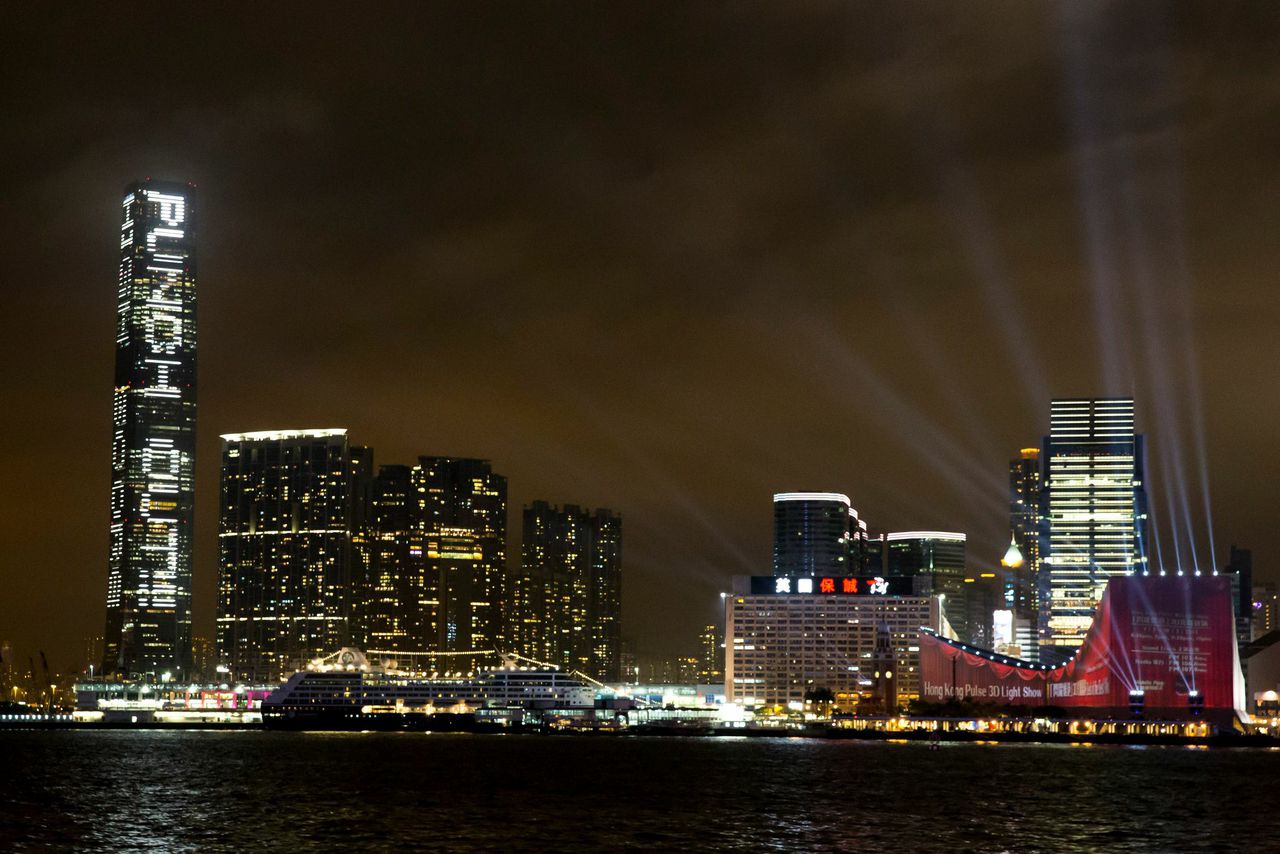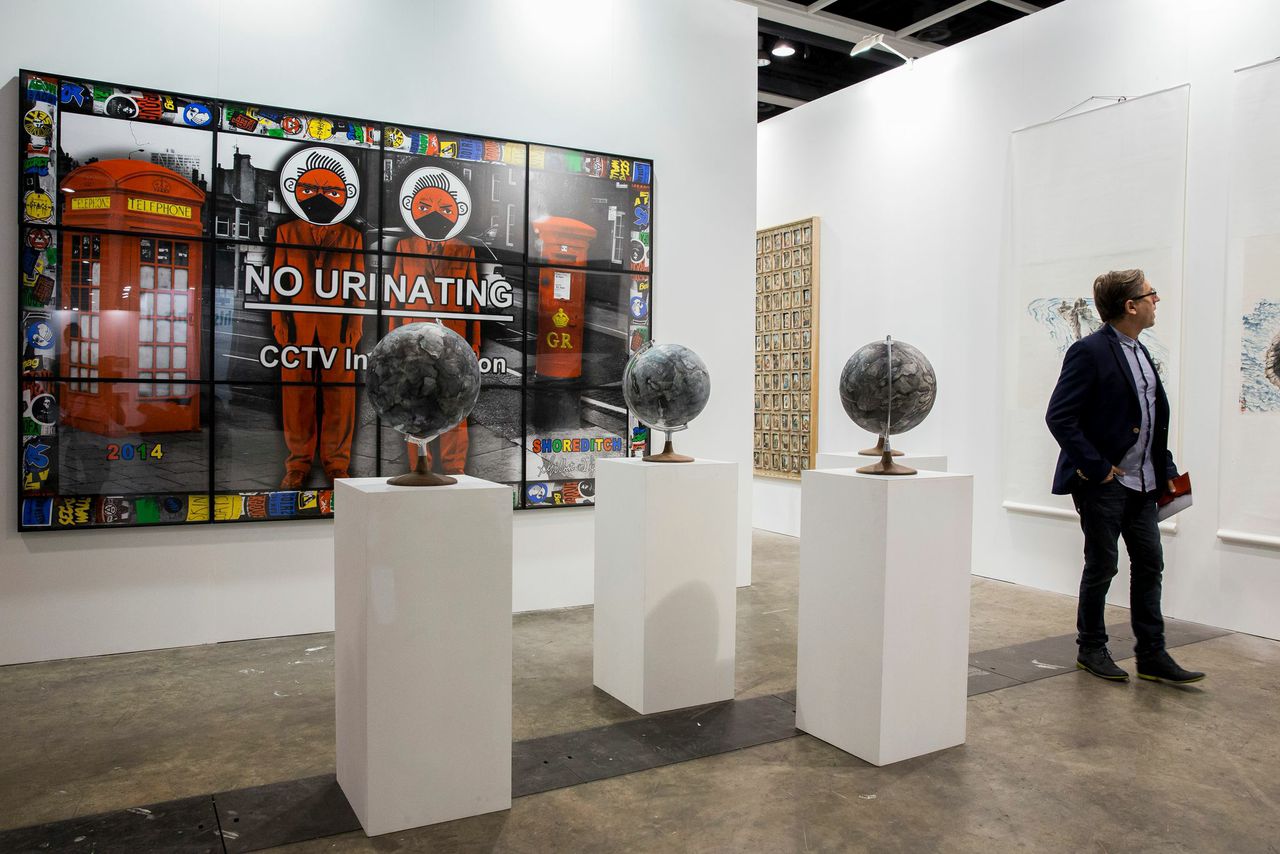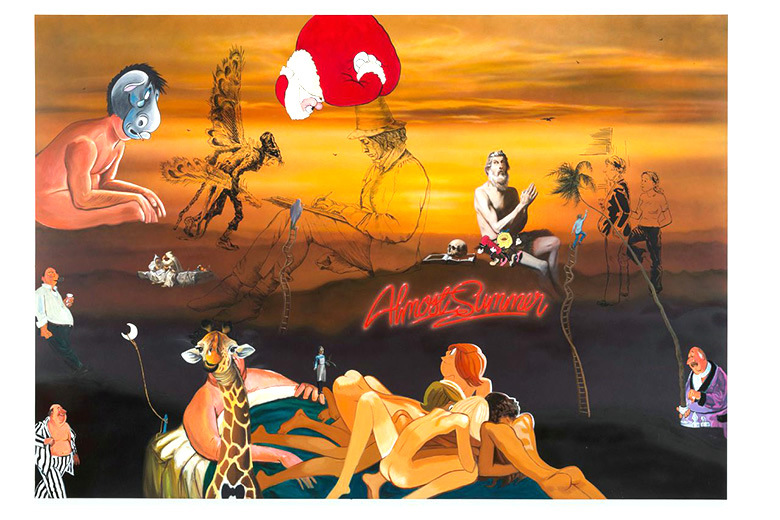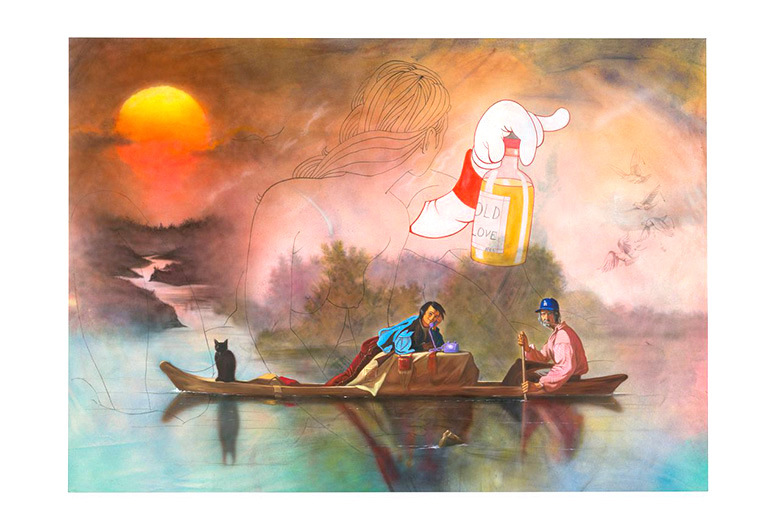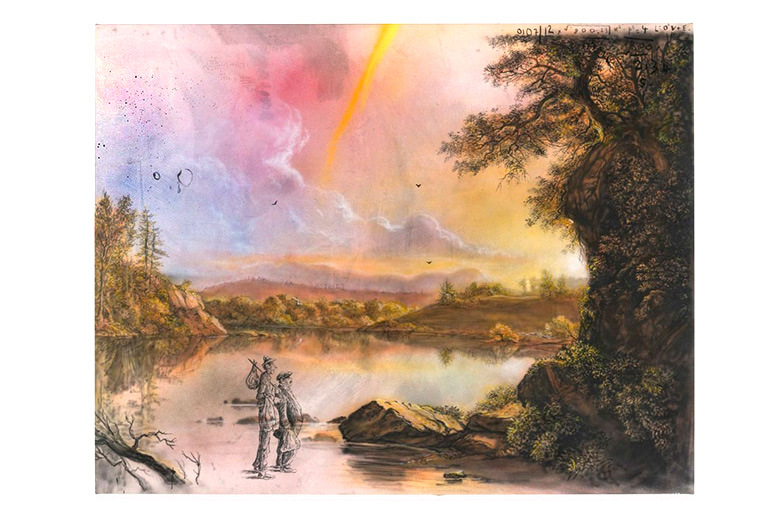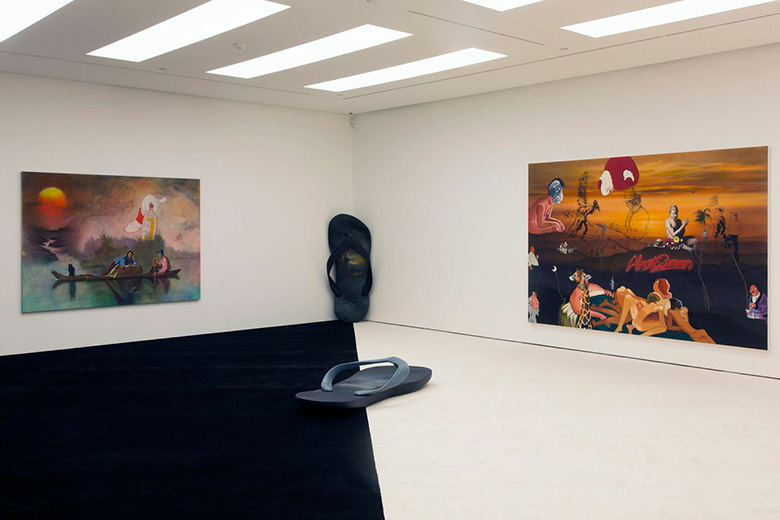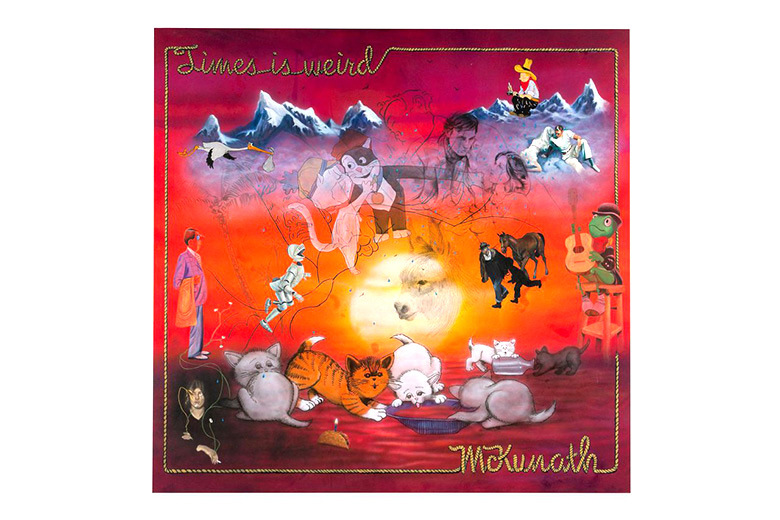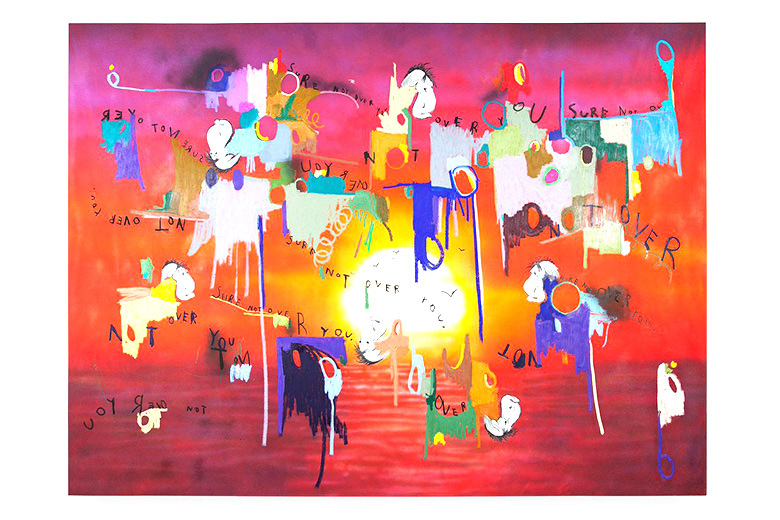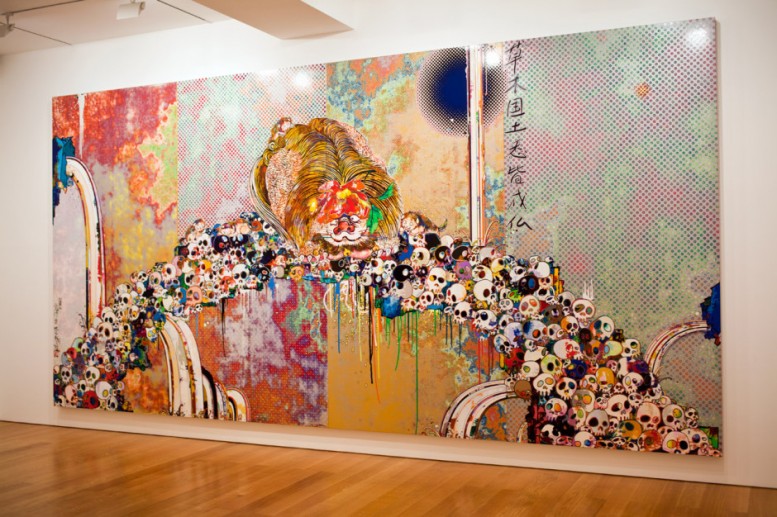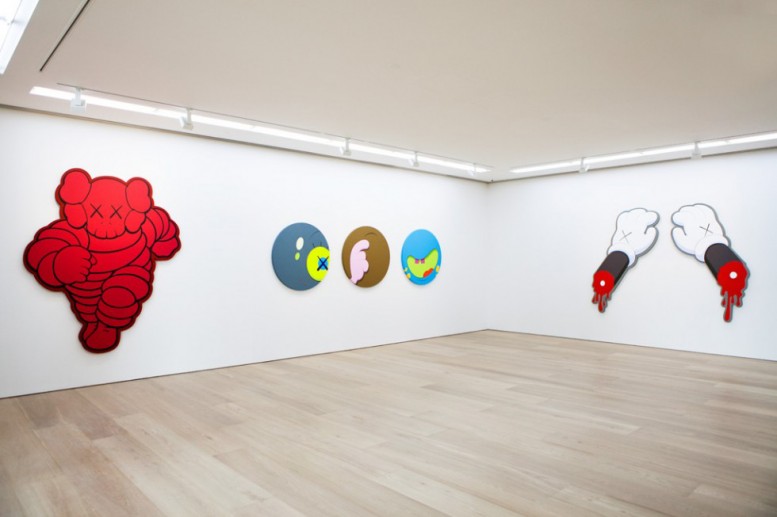Installation view of How to be Happy Together?, Para Site, Hong Kong, 2024. Photo: Felix SC Wong.
text by Jen Piejko
“If I want to see him, I know where to find him.”
Hong Kong director Wong Kar-wai’s 1997 film Happy Together follows Ho Po-Wing and Lai Yiu-Fai, two men whose stormy romance takes them from Hong Kong to Buenos Aires, looking for peace in their love.
Pulling a geographic to Argentina, Fai finds work at a Chinese restaurant to support the couple and befriends Chang, his Taiwanese co-worker. Eventually returning home alone to Hong Kong, Fai stops at a bustling counter restaurant owned by Chang’s family in the Liao Ning night market in Taipei. He spots a photo of his former coworker tucked into a mirror frame behind the booth’s phone and swipes it on his way out, telling himself, “If I want to see him, I know where to find him.” Romantic and platonic engagements keep Fai, Po-Wing, and Chang in close connection as long as memory lasts.
At Para Site, a new show titled How to be Happy Together? brings together twenty artists from the Hong Kong region and Latin America echoing Po-Wing’s and Fai’s heartbreak pilgrimage. Curated by Zairong Xiang, author of Queer Ancient Ways (2018), the show explores the fruitful spaces between tradition and modernity, and how these gaps allow for new forms of family and kinship to flourish. The exhibition space is designed by Su Chang Design Research Office to uphold the principles of the I Ching: the scaffolding inside Para Site is built in the outline of the Tai hexagram, a sacred shape where masculine and feminine forces meet and move in one harmonious, eternal flow.
Following the film’s radical exploration of queer connection, How to Be Happy Together? gathers works that critique the idea of family as something determined by blood and bureaucracy. Community, as many apps will now remind you, is as much about physical proximity as it is about familiarity. Abraham Cruzvillegas’s Juntitud (2024) is a sparse plywood structure laid on the floor that holds up a delicate network of chicken wire, plastic tubes, metal springs, oven mitts, crates, a ladder, and bottlecaps, all spray-painted a sweet watermelon pink and green. The whole assemblage supports a small budding cactus and its single leafy branch’s budding pink flowers. The piece was formed in the artist’s signature style of autoconstrucción, an improvisational and optimistic form that he witnessed in his family’s neighborhood of Ajusco, a volcanic area near Mexico City, where neighbors kept local infrastructure permanently open-format and unfixed based on found and raw materials as they became available. In Ajusco, unpermitted homes, public spaces, and interiors have continued to develop in a dynamic state since the 1960s. The architecture of the neighborhood exhales or inhales as needed to accommodate the community that occupies it.
Installation view of How to be Happy Together?, Para Site, Hong Kong, 2024. Photo: Felix SC Wong.
Mimian Hsu’s No. 1674, Seccion Administrativa, Version 1 & 2 (2007) hangs on a nearby wall. A traditional newlywed satin bedspread in bright, bursting carmine –a hue representing happiness in Chinese traditions – is embroidered with gold and blue birds and flowers framing the text of a letter held in the National Archive of Costa Rica. The letter, written to the Minister of the Interior in 1907 by a group of Chinese men, requested permission for their immediate families to join them in their new home country after exclusionary laws effectively ended Chinese immigration to Costa Rica. The project parallels the artist’s own story: Her Taiwanese family immigrated to Costa Rica in the 1970s, and she often incorporates her relatives into her practice exploring the cultural hybridization that results from Chinese immigration and the frictions of this long integration.
In Payne Zhou’s film Mismatch (2021), women dance to seduce their clients, their “[b]earded johns in algorithm land.” Their fuzzy, glittering figures and soft gestures of affection are concealed by deepfake facial masking and voice-disguising software for fourteen minutes of grayscale night-vision footage on the ballroom floor. They are interchangeable instruments of financialization: “Finance is the accelerator,” Zhou’s narrator tells us. “This is when true wealth is created, and so is when destruction is created… You are rapidly consuming your body.” Limited transactions for connection and care are negotiated on the dance floor.
Installation view of How to be Happy Together?, Para Site, Hong Kong, 2024. Photo: Felix SC Wong.
Other works illustrate ties of solidarity and love in many different forms of care and undertaking. Pauline Curnier Jardin’s film Fireflies (Lucciole) (2021) was made in collaboration with Feel Good Cooperative, a collective of sex workers in Rome, to support each other financially during the earliest, most alienating months of the pandemic. Tang Han and Xiaopeng Zhou’s two-channel film Ordinary Affects (2024) closes in on artificial tulips next to a hand sketching one of them in a few spare, simple strokes. A teacher guides the hand of her student, a woman in her eighties in her early stages of dementia. Meanwhile, Xiyadie’s rice paper dyed in searing oranges and blues flutters on the wall, hiding tales of queer love and desire in traditional Chinese paper-cutting folk art. The artist’s chosen name translates to ‘Siberian butterfly,’ the delicate, papery creature known for its ability to survive even the harshest climates. Xiyadie adopted the name after finding acceptance in the gay community in Beijing, something he could not find in his conservative hometown.
Chinese-Brazilian architect and designer Chu Ming Silveira presents her instantly recognizable and heartening Orelhinha and Orelhão (little ear and big ear in English), the egg-shaped telephone booths she designed for the Brazilian government in the 1970s. Her ears were bright portals of instant connection on street corners throughout Brazil before spreading throughout Latin America, China, and Africa. Ren Hang’s waves of bodies come together in a pleasure, cuddle, unity, rest formation in his photograph Untitled 46 (2012). These pieces are models of what the exhibition’s introductory text describes as the “yearning imperatives” that keep us together. “How to be Happy Together?” continues to answer its own question: our chosen families, much like our families of origin, are our chosen obligations to each other, too.





